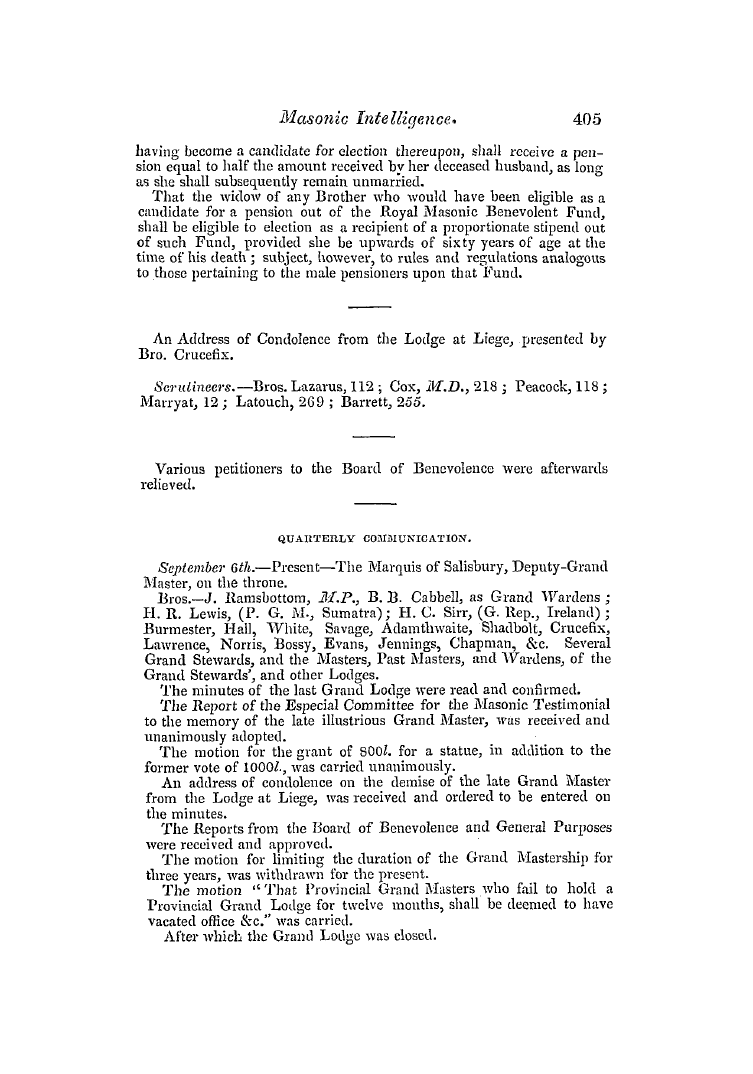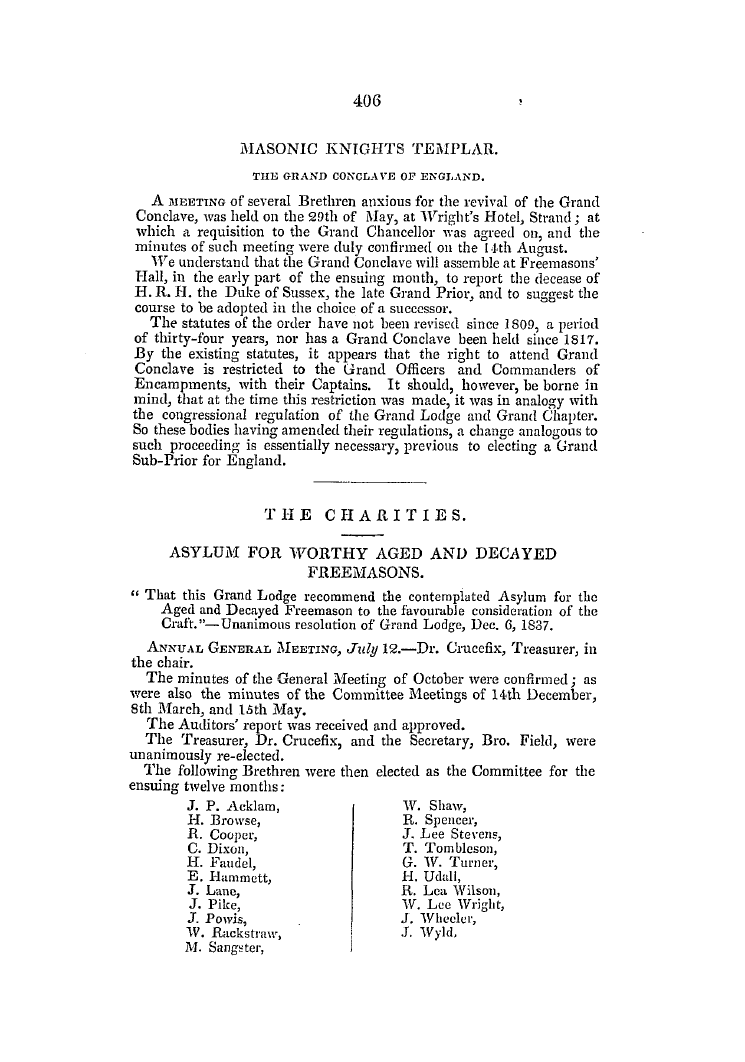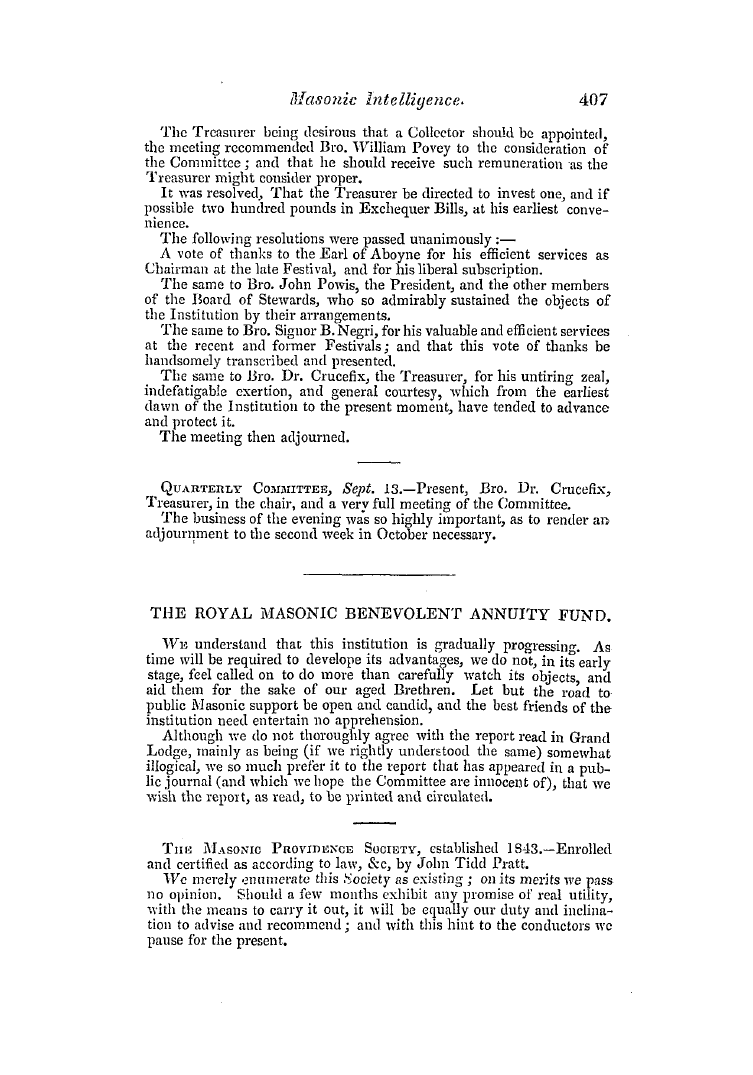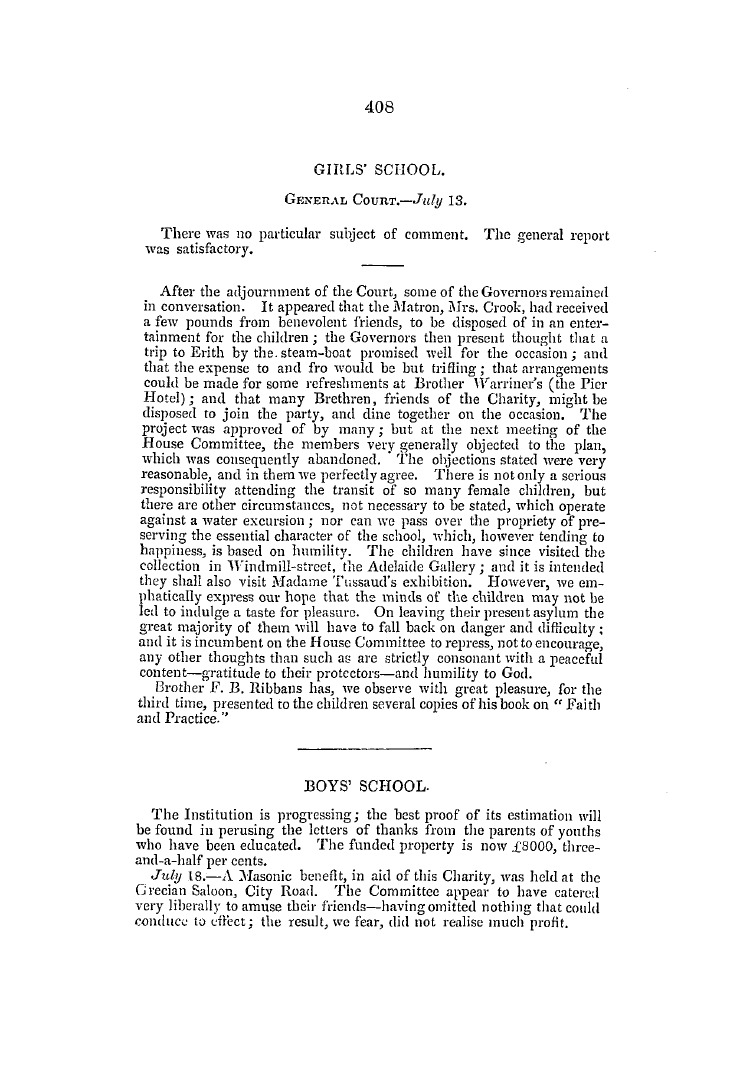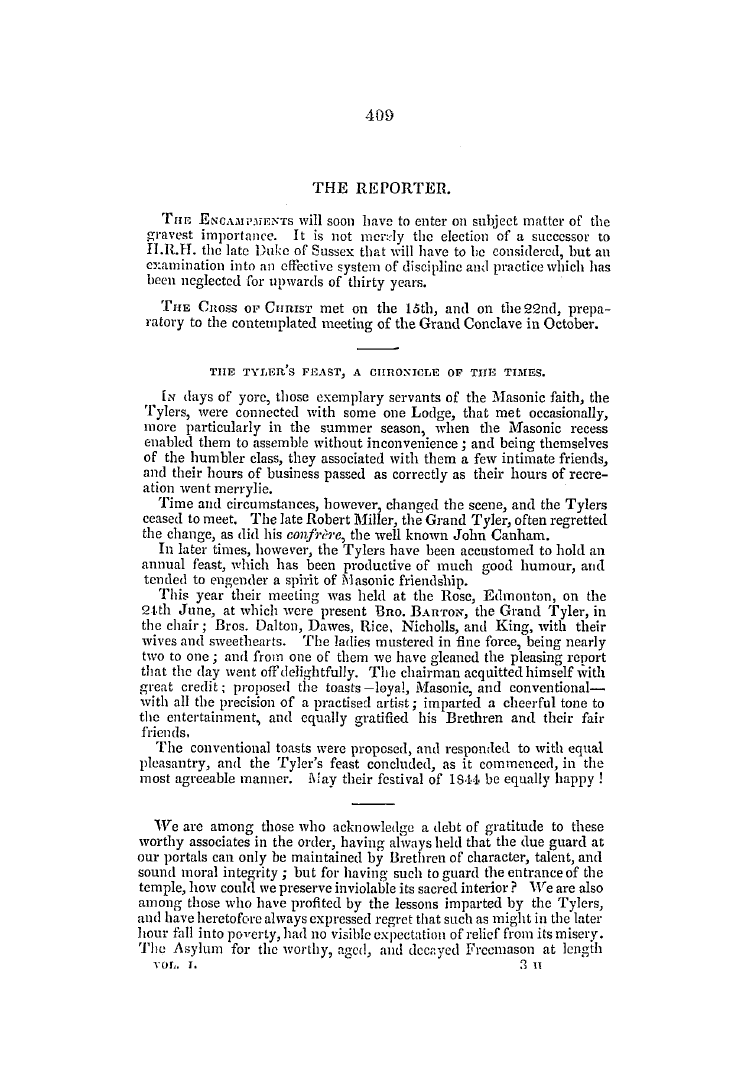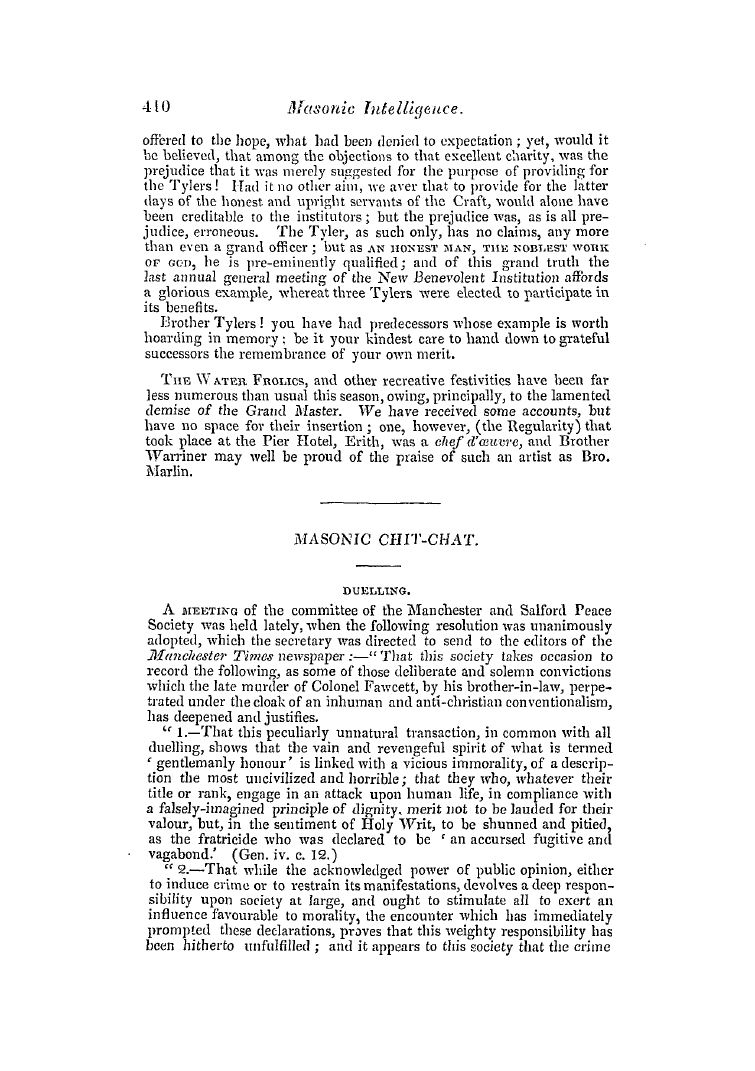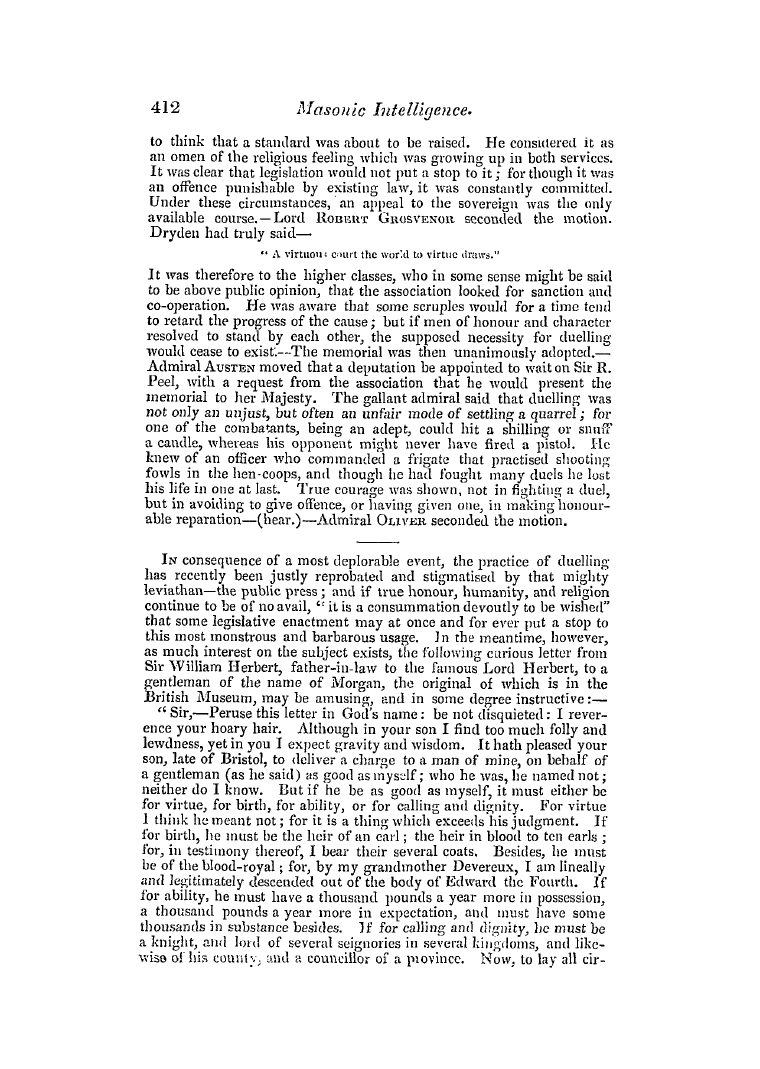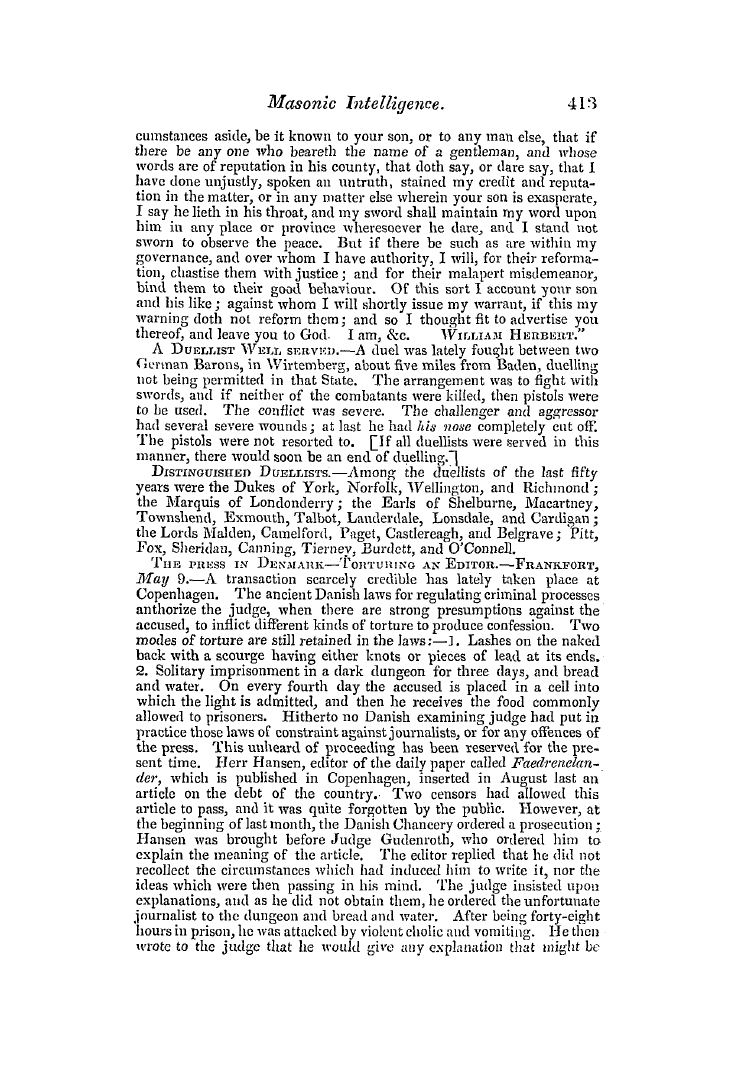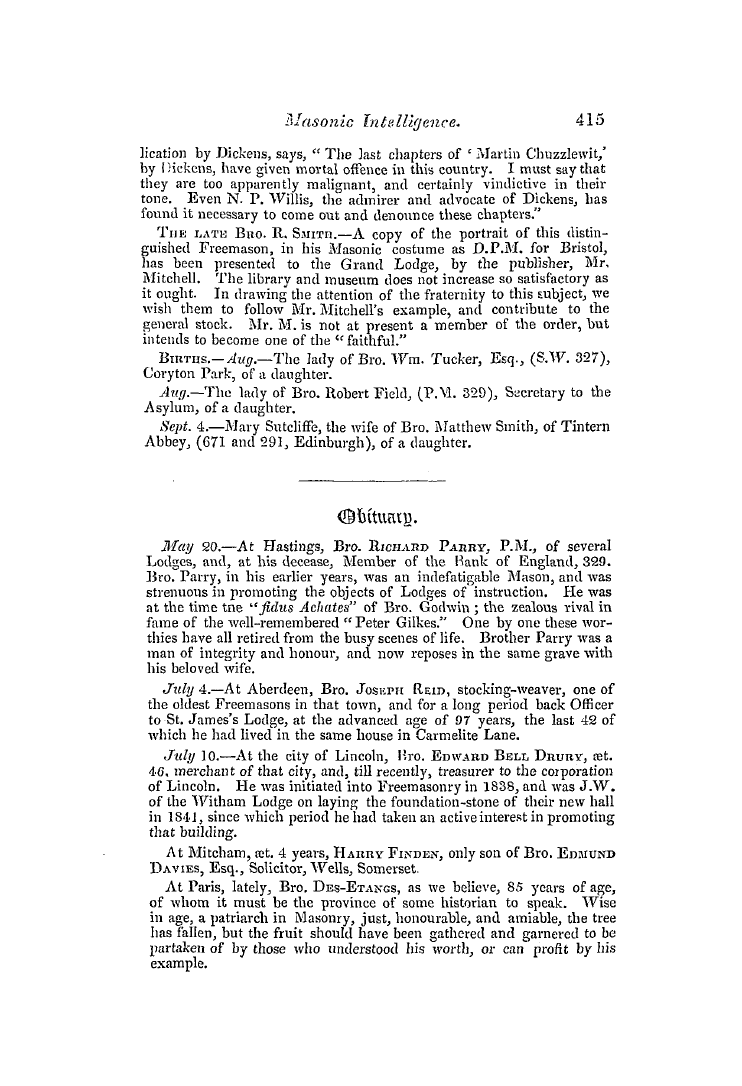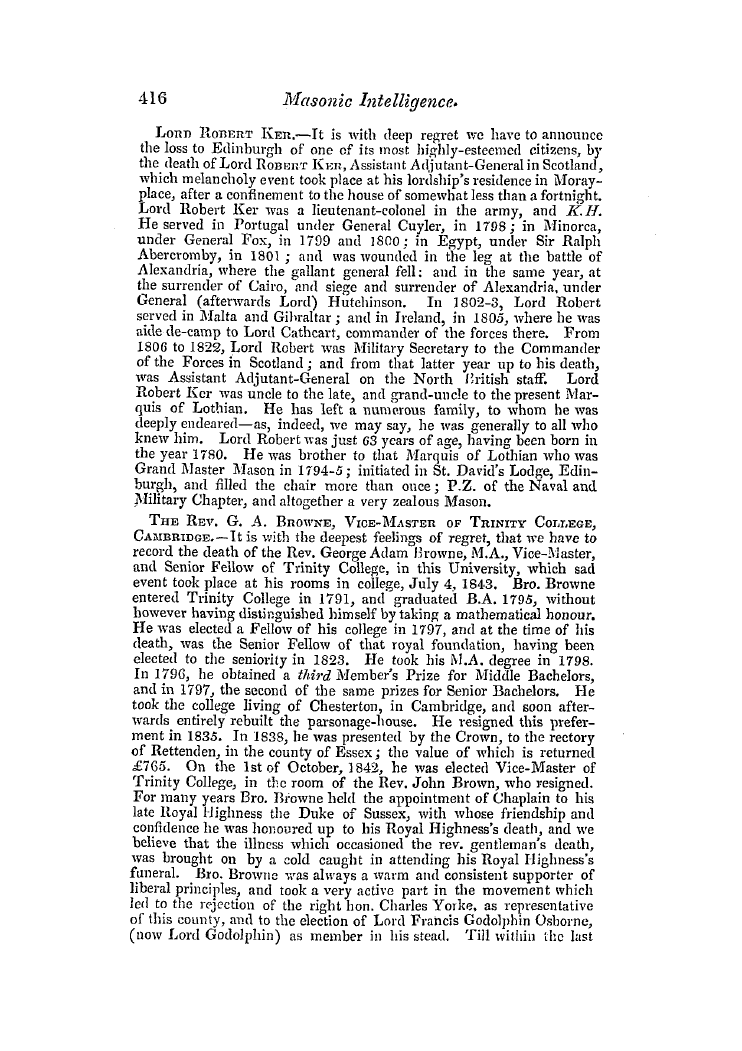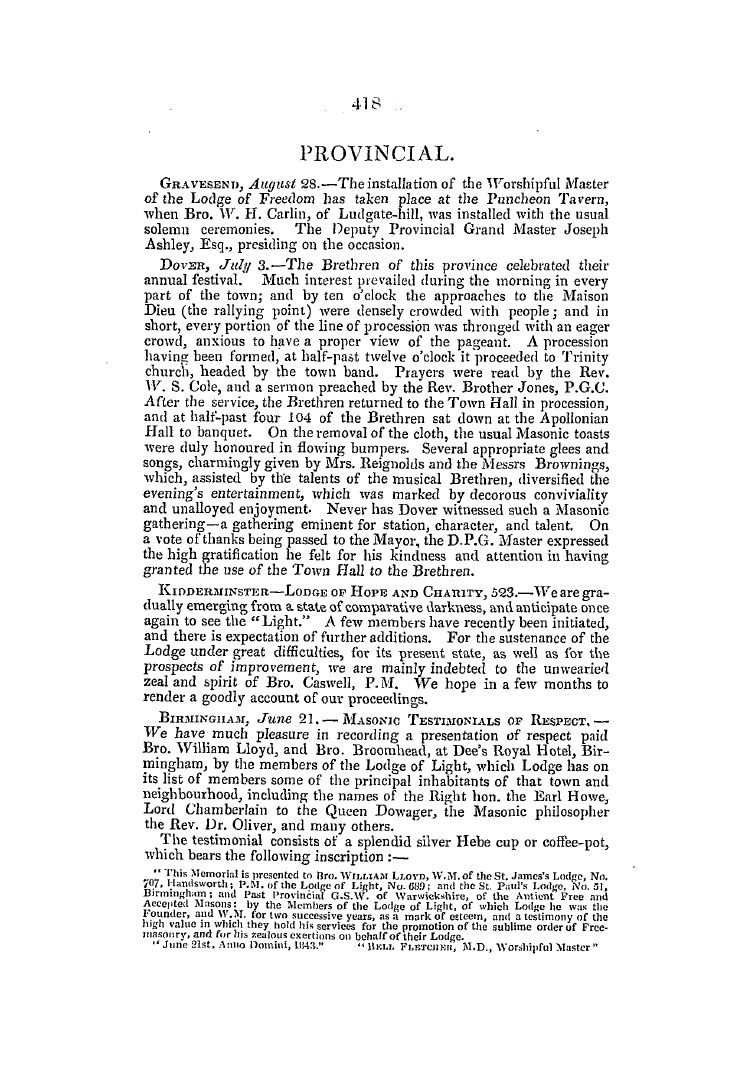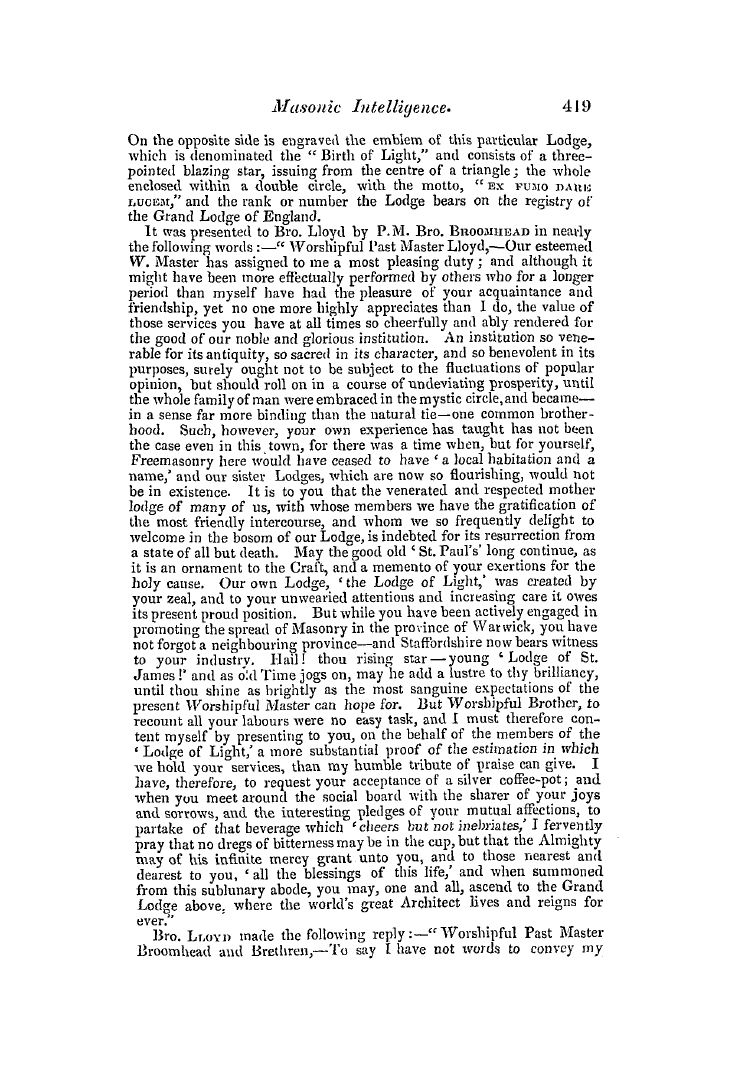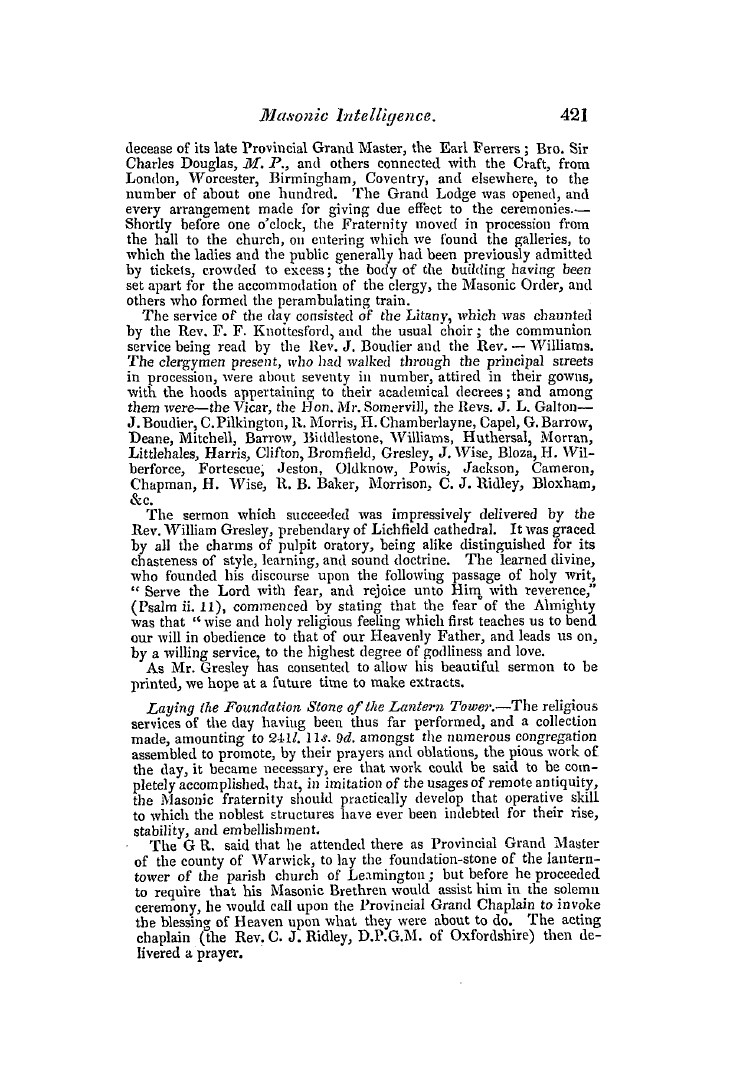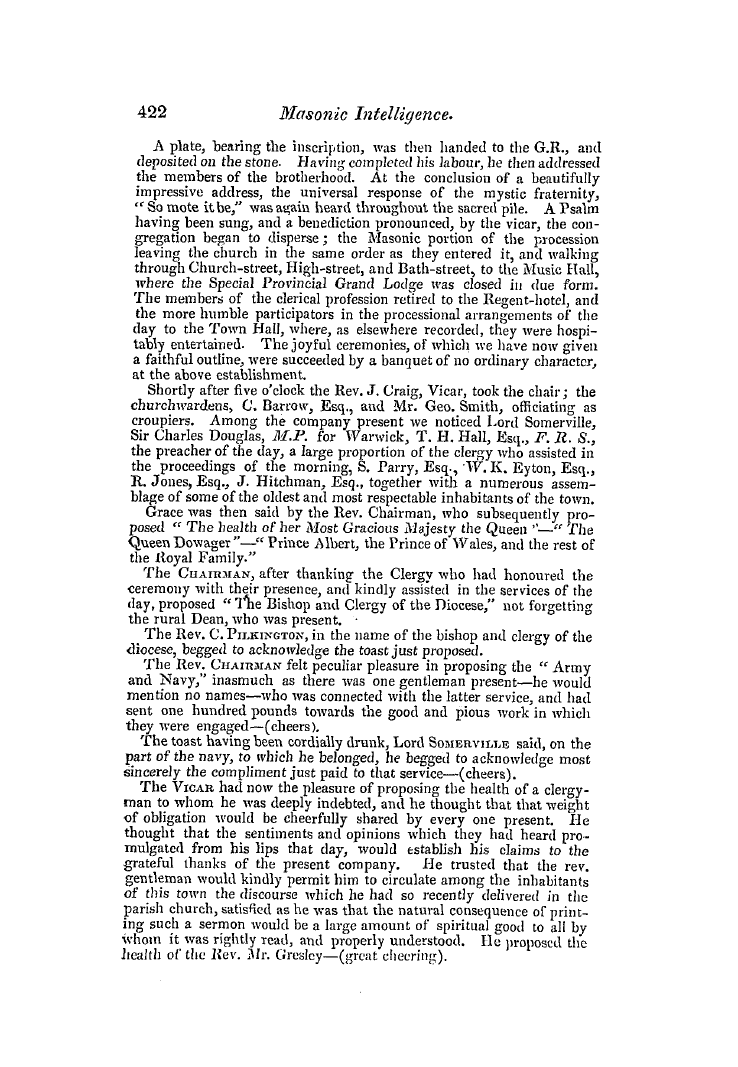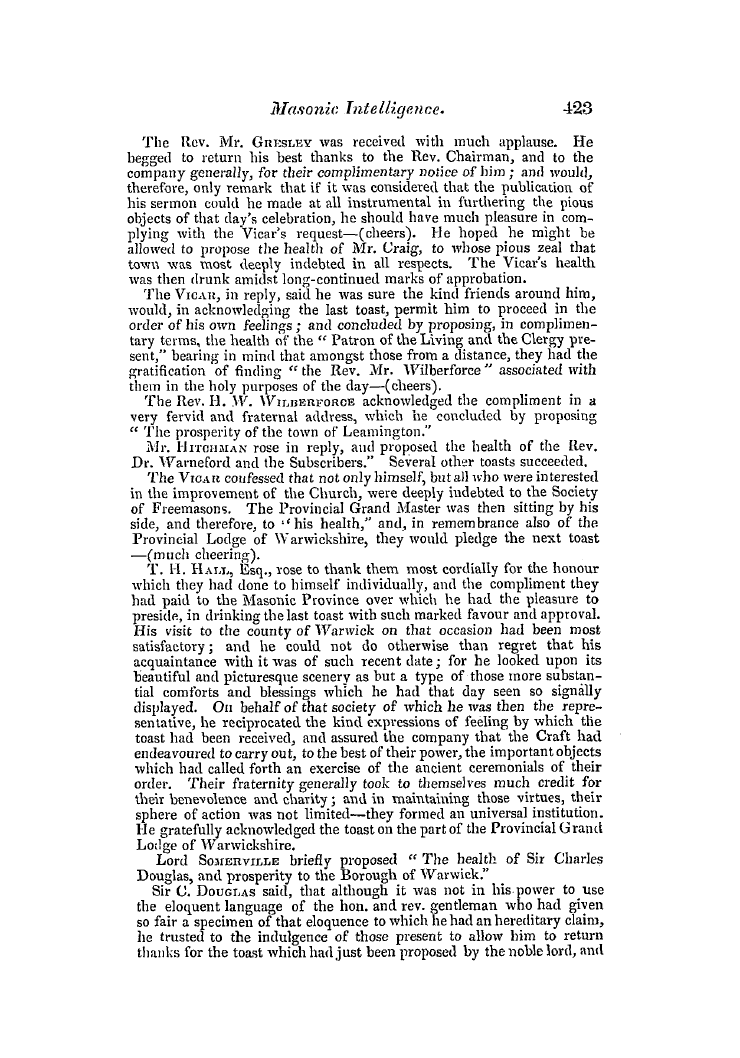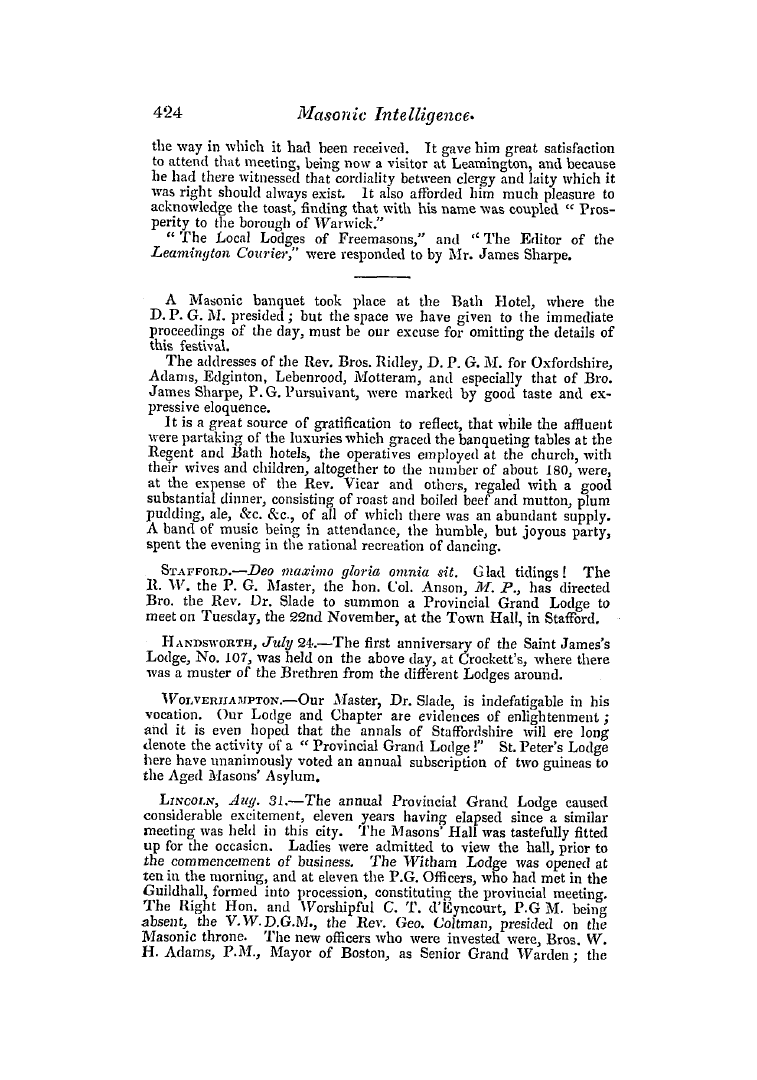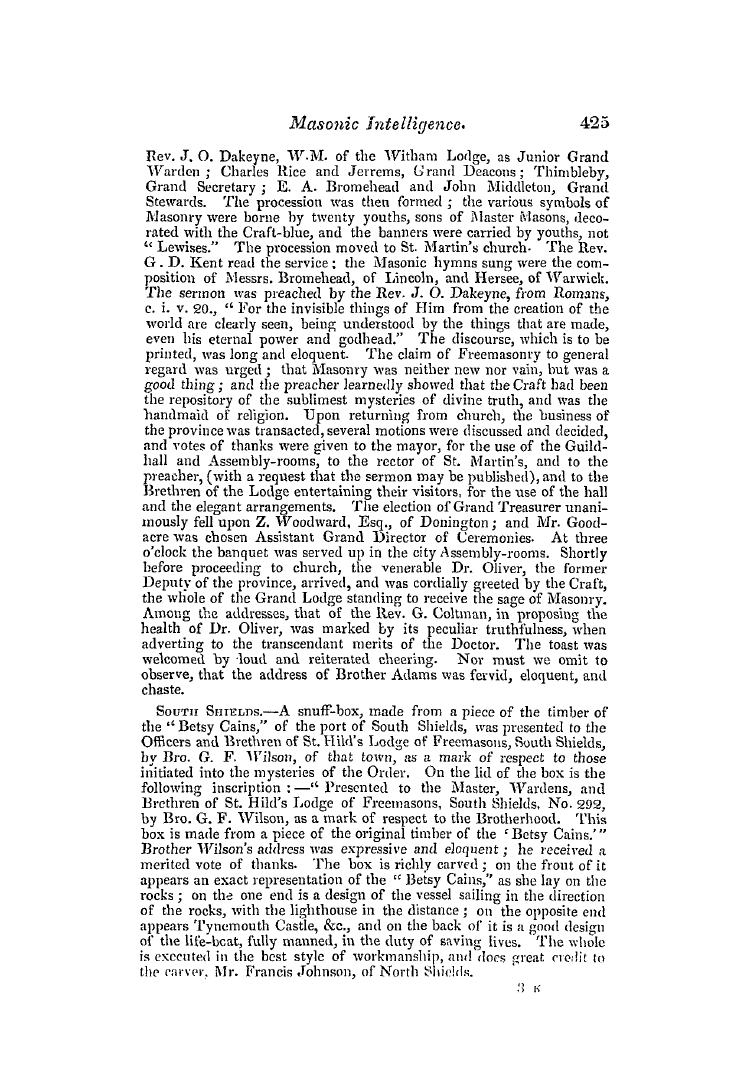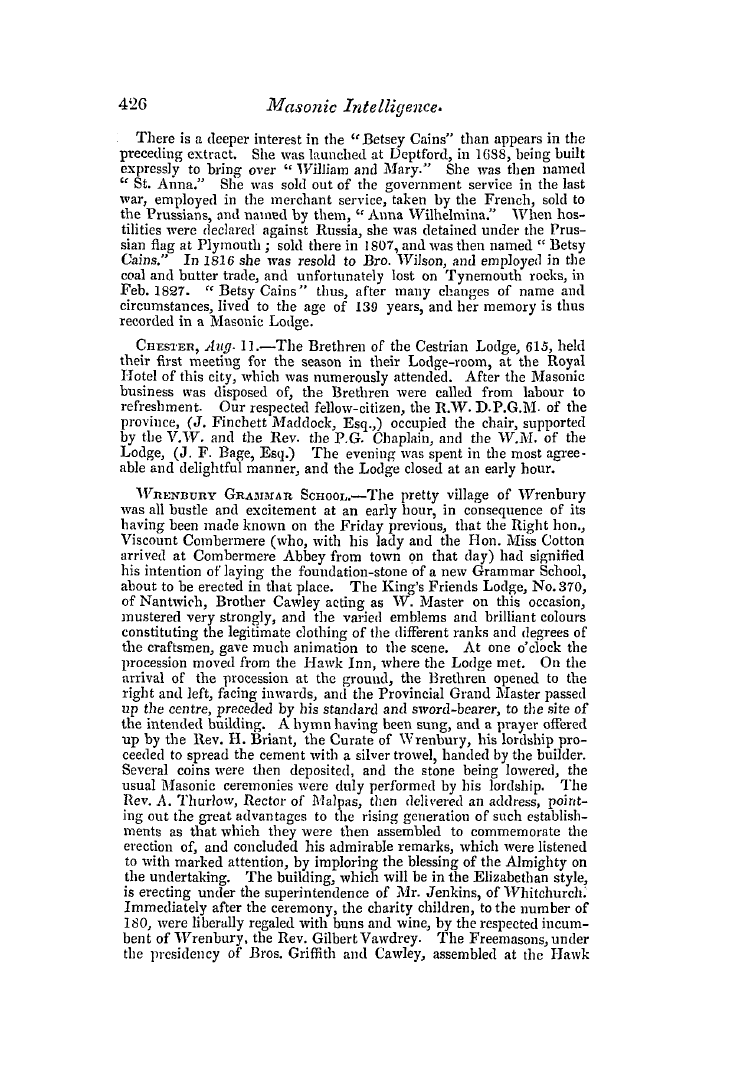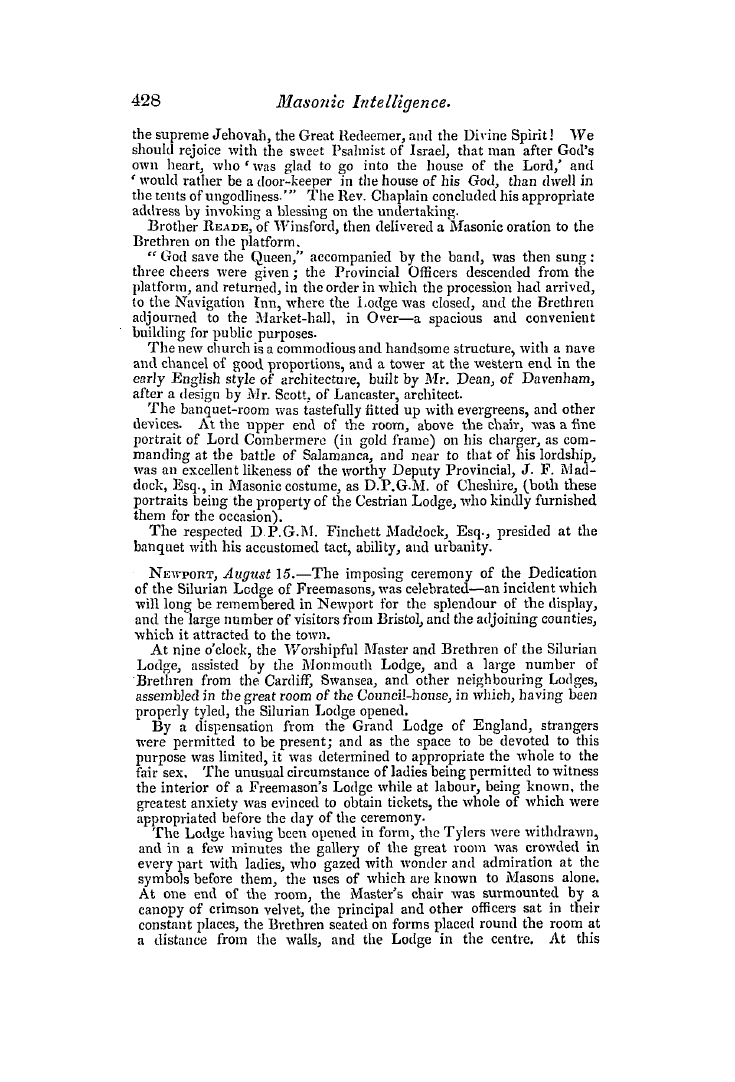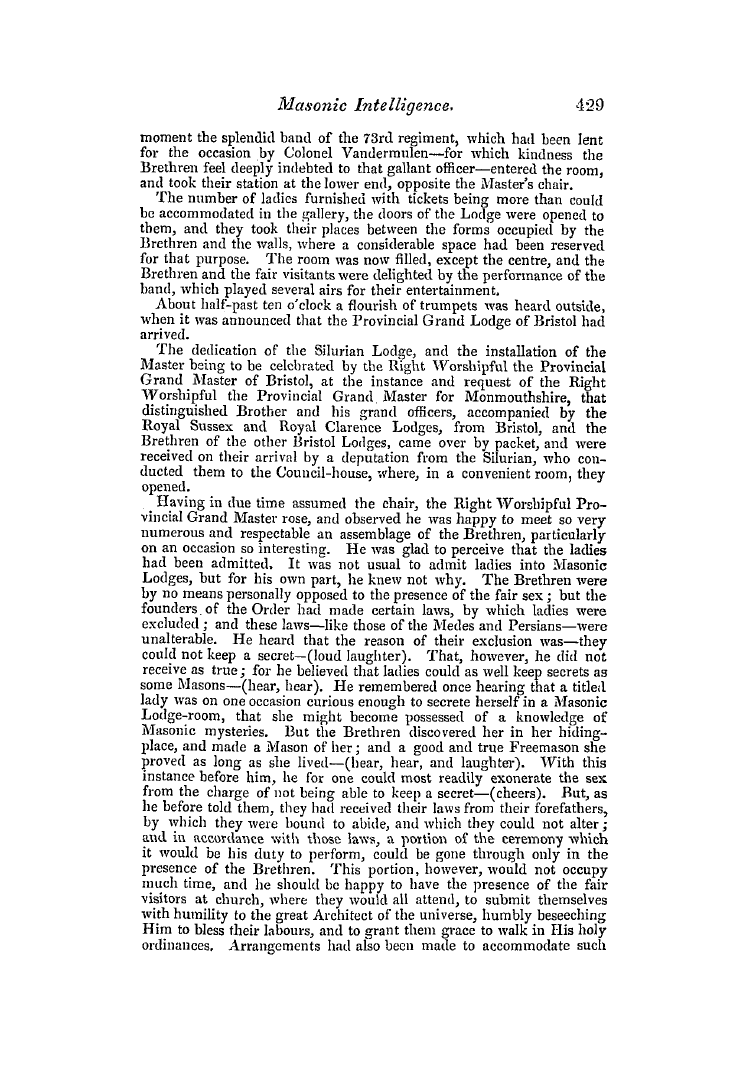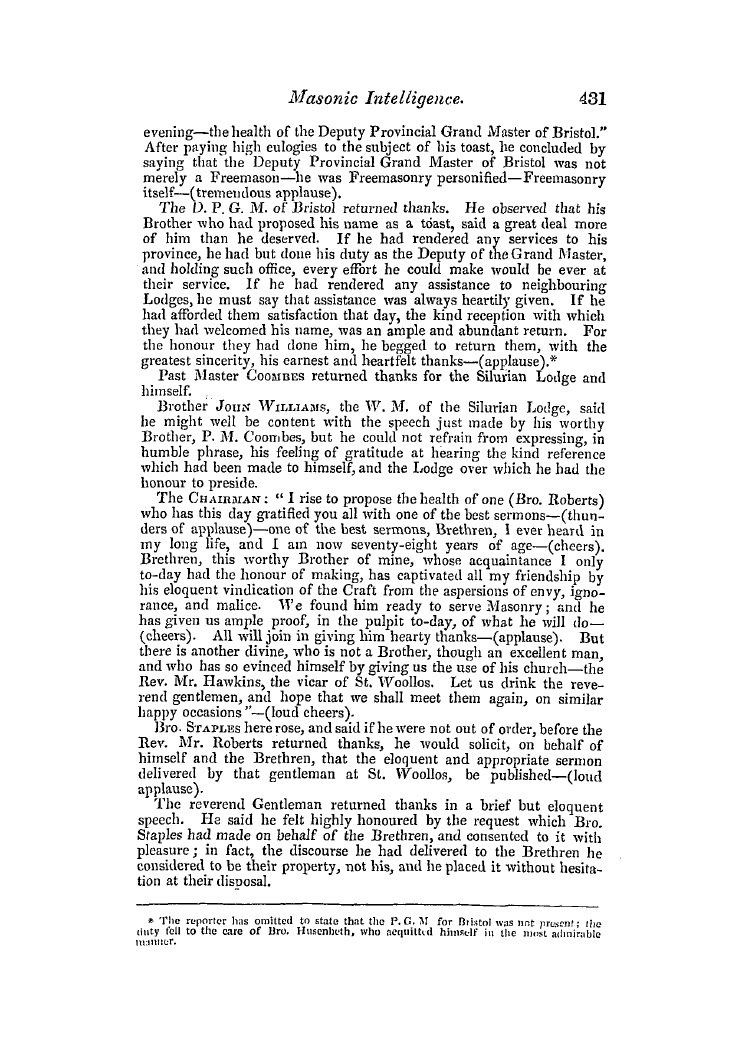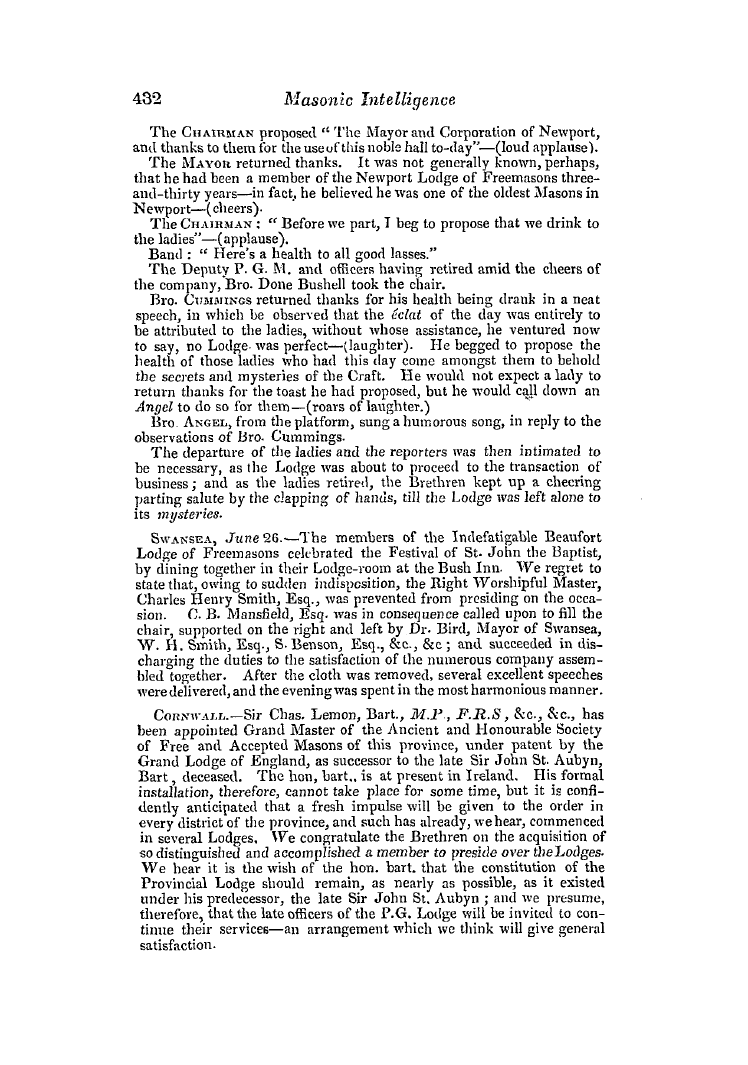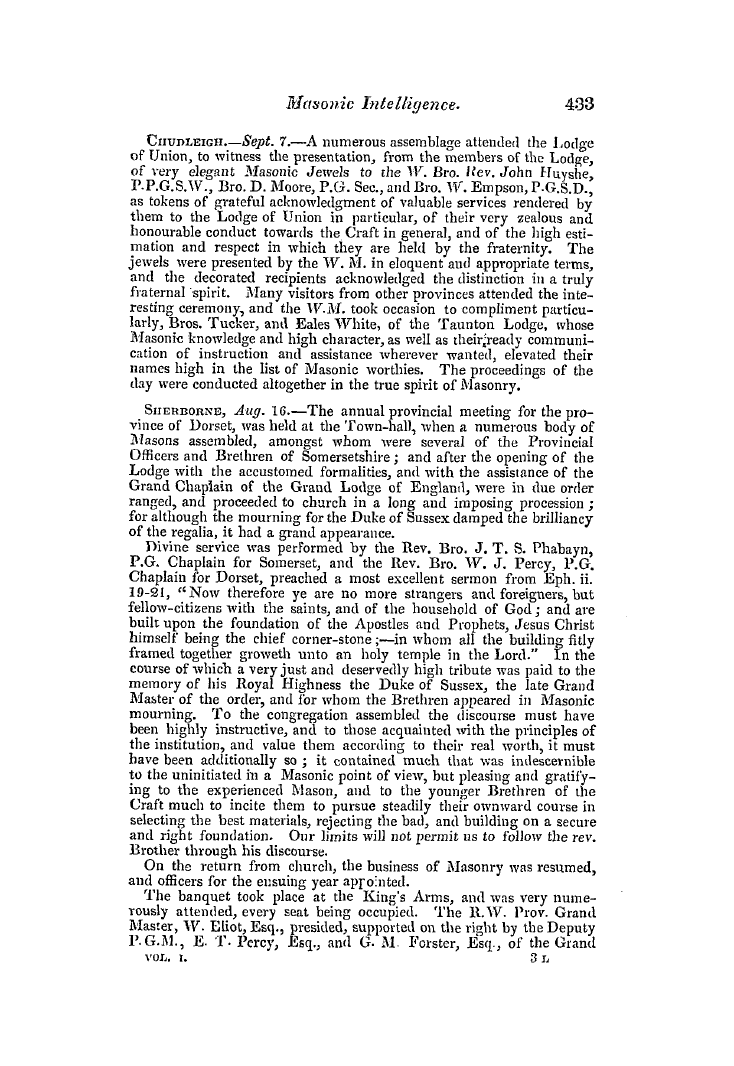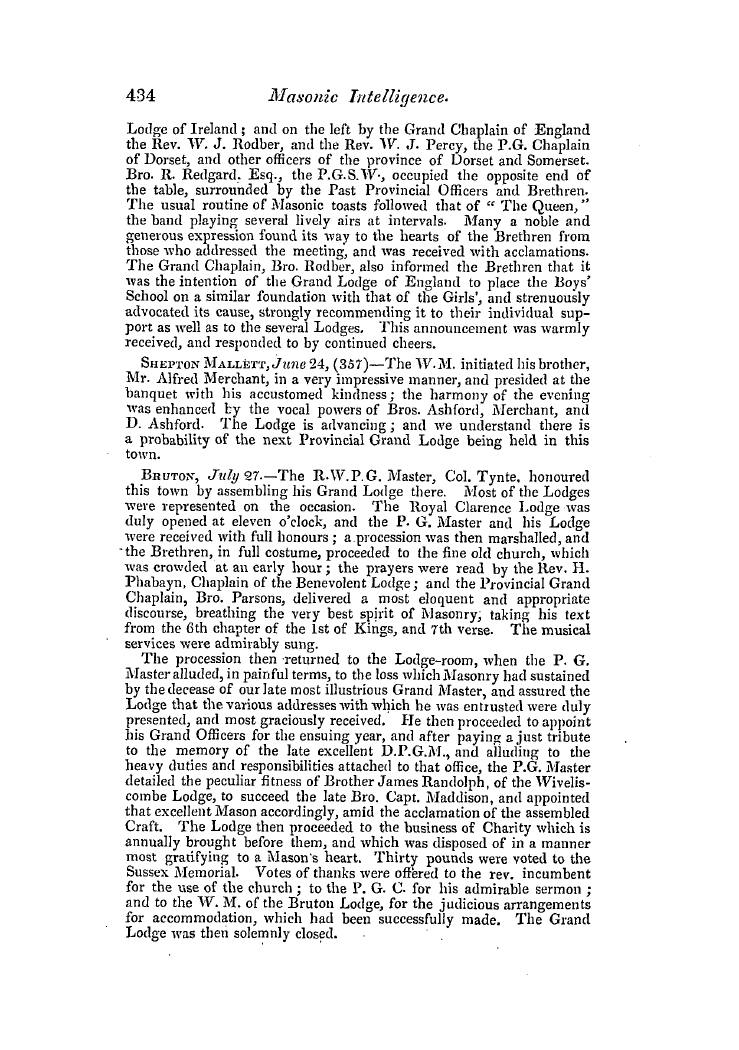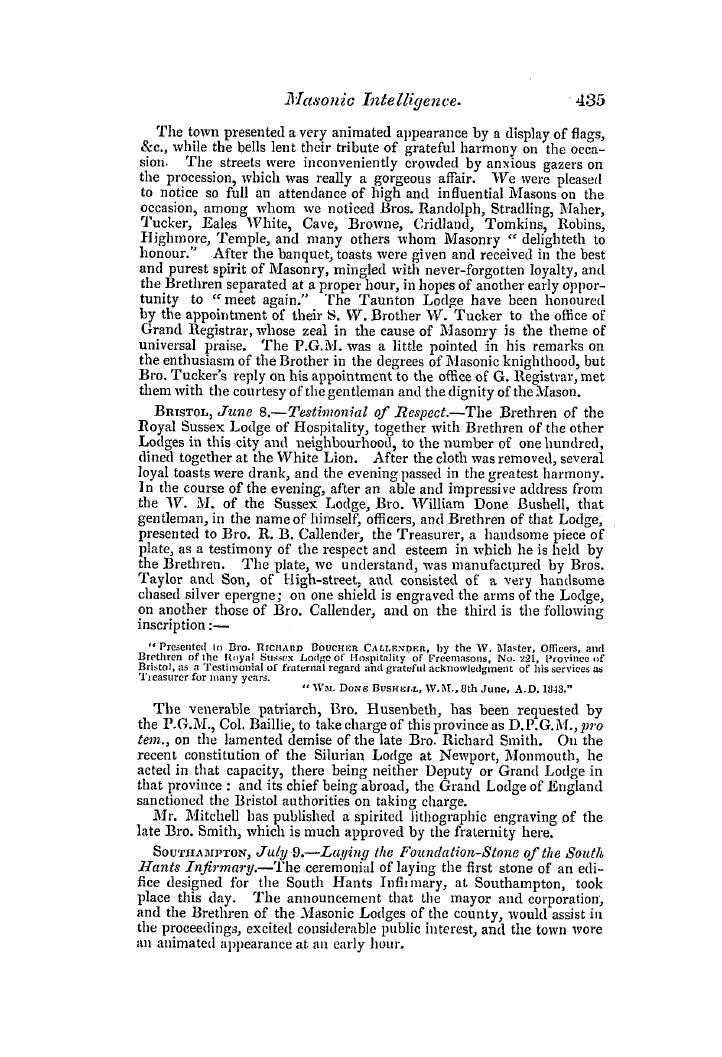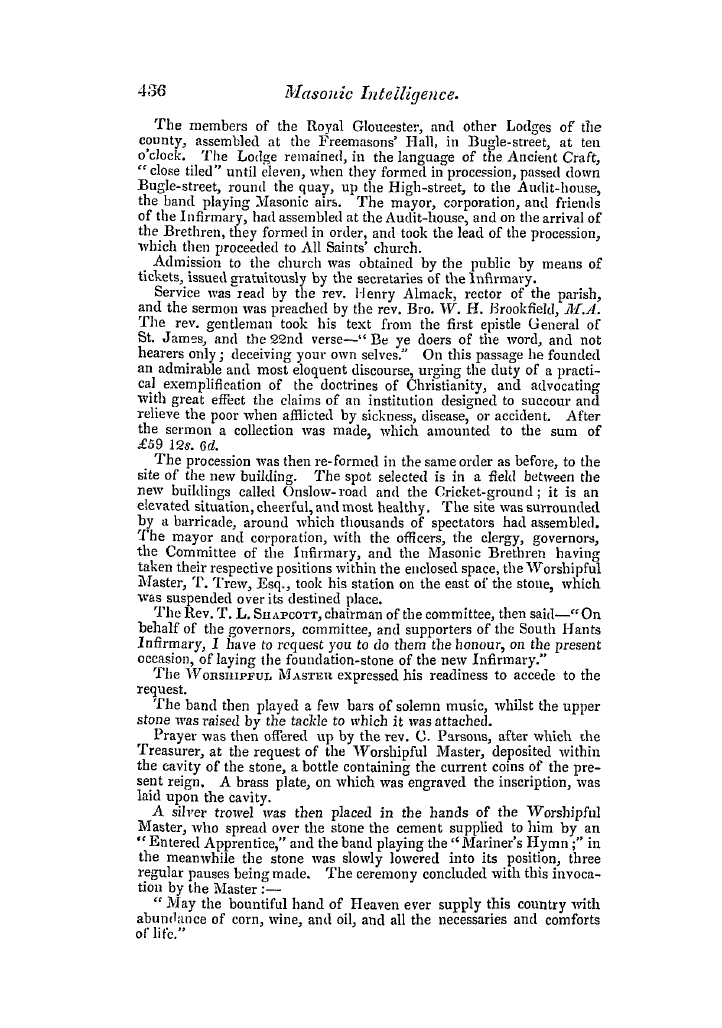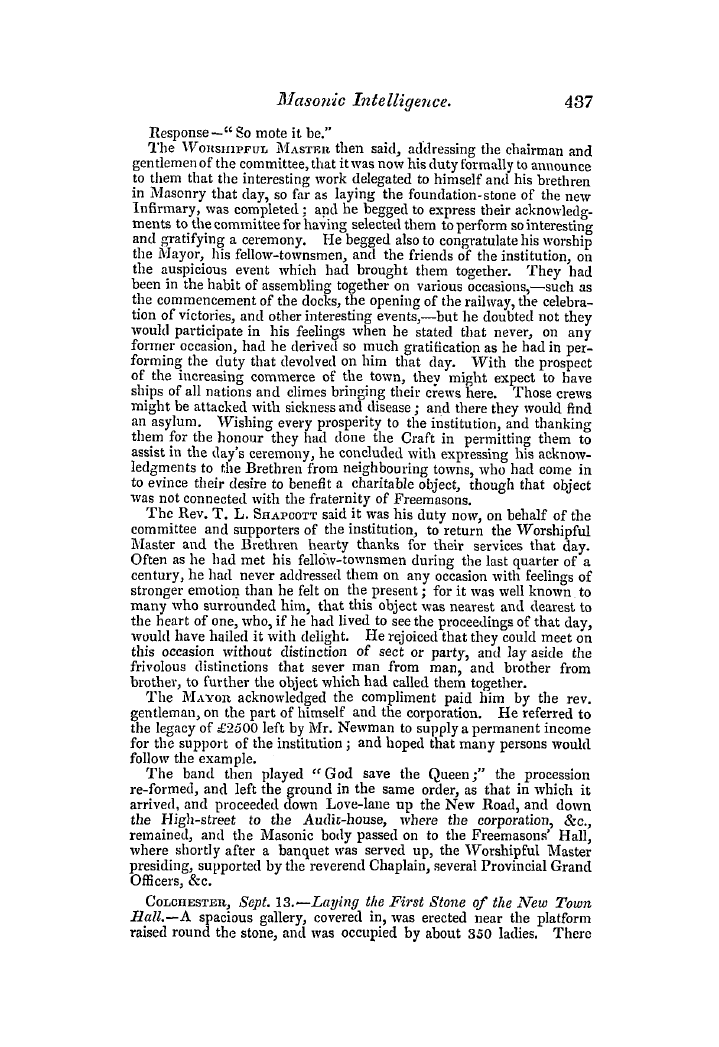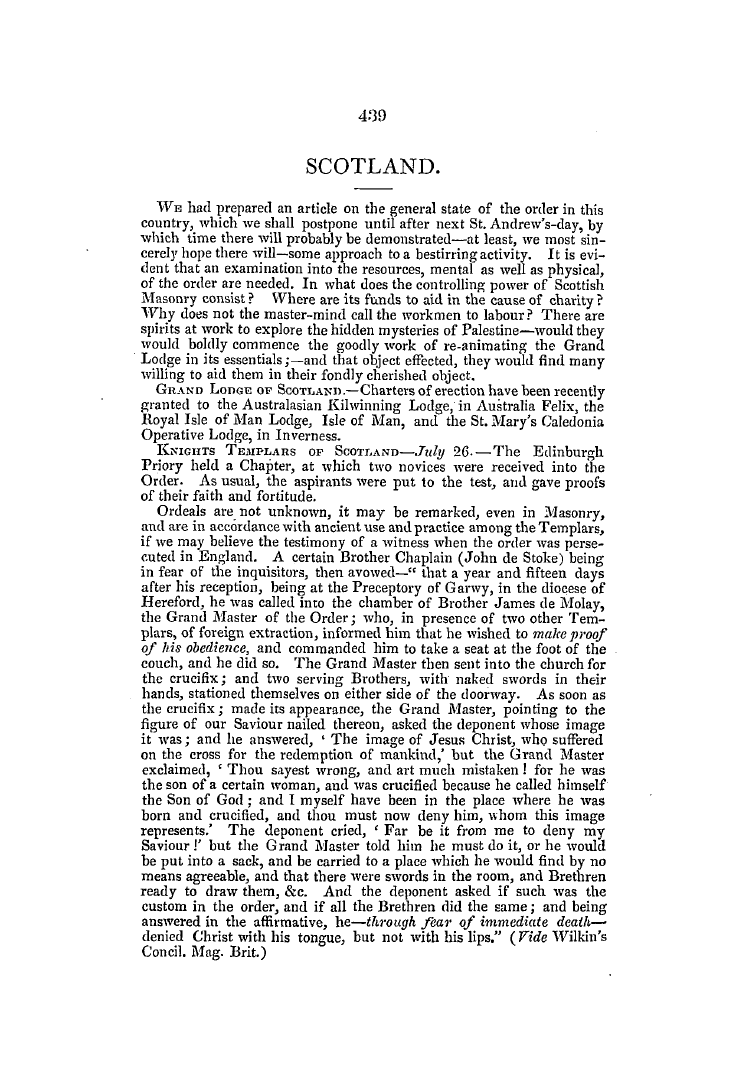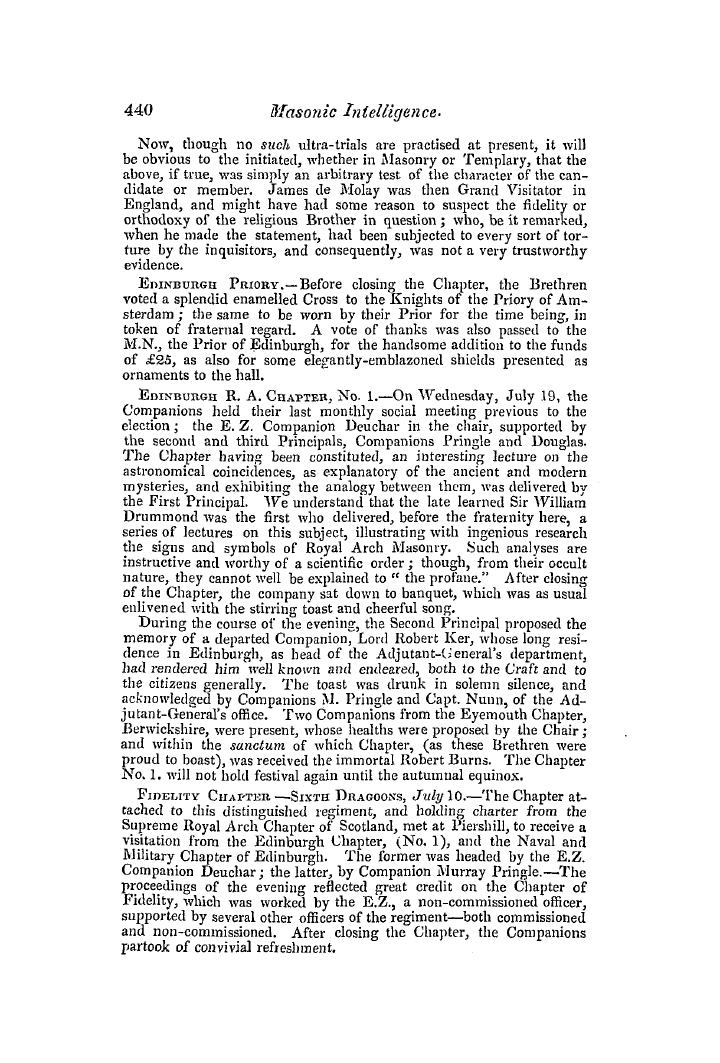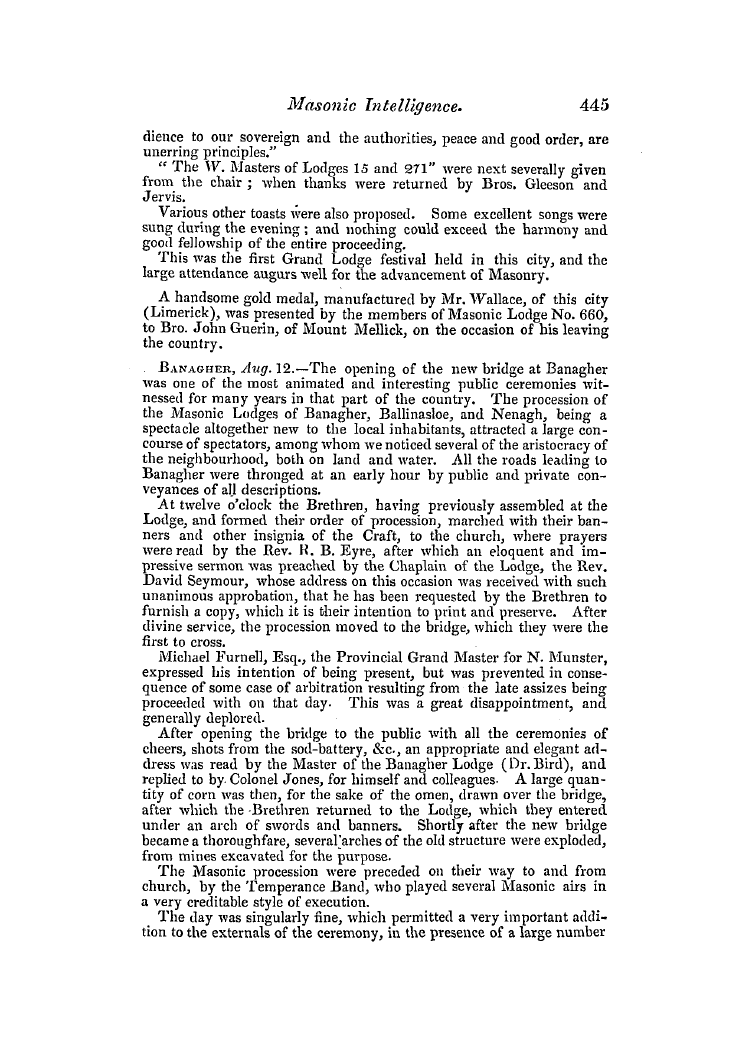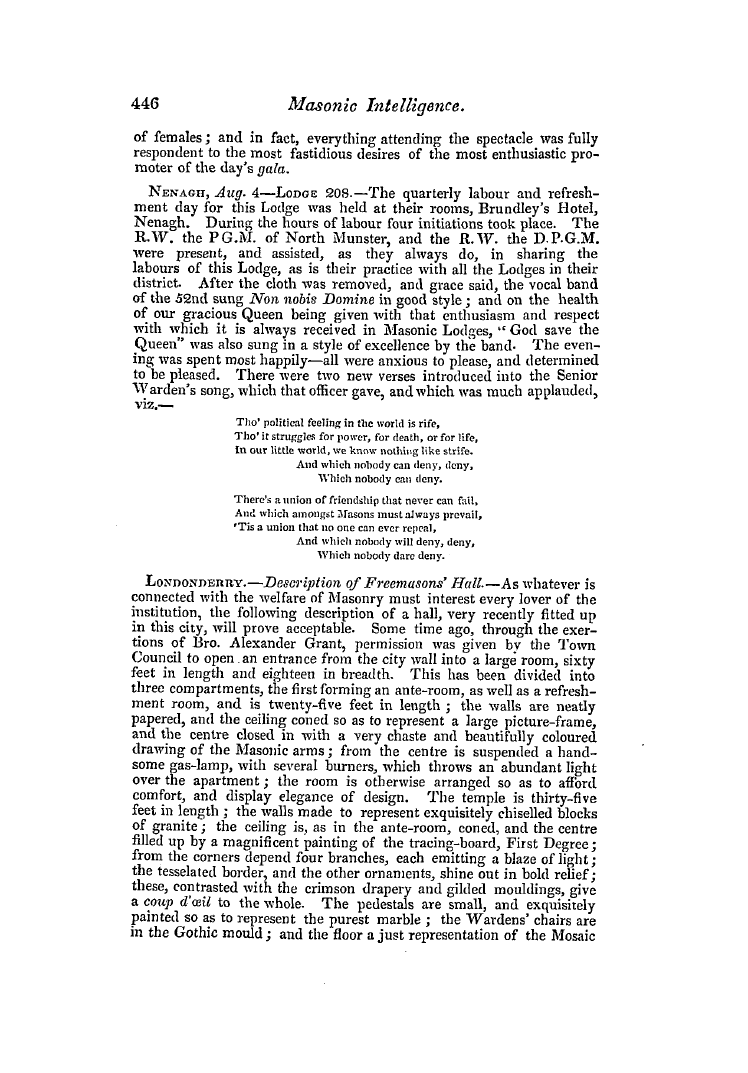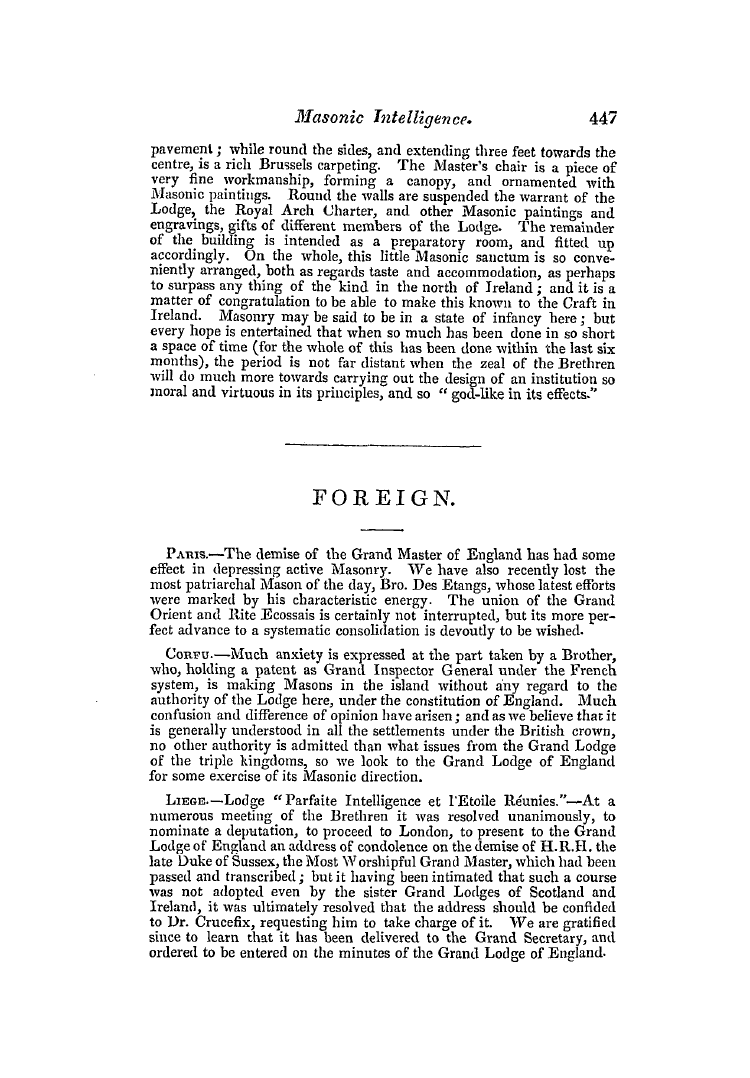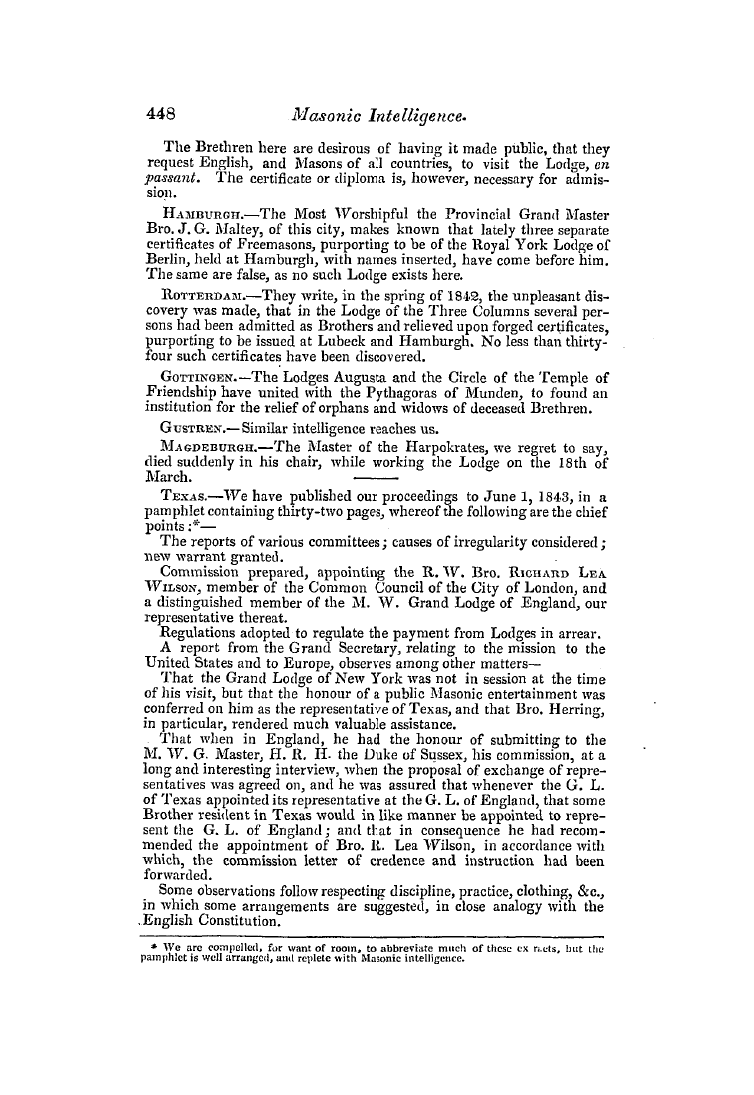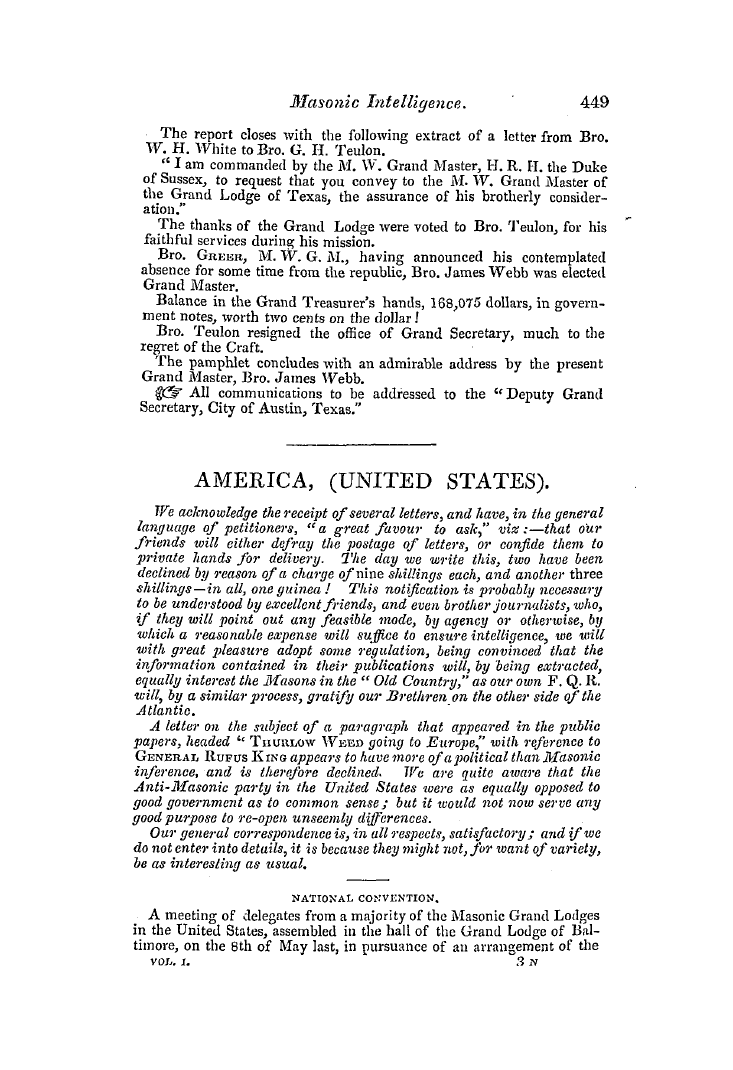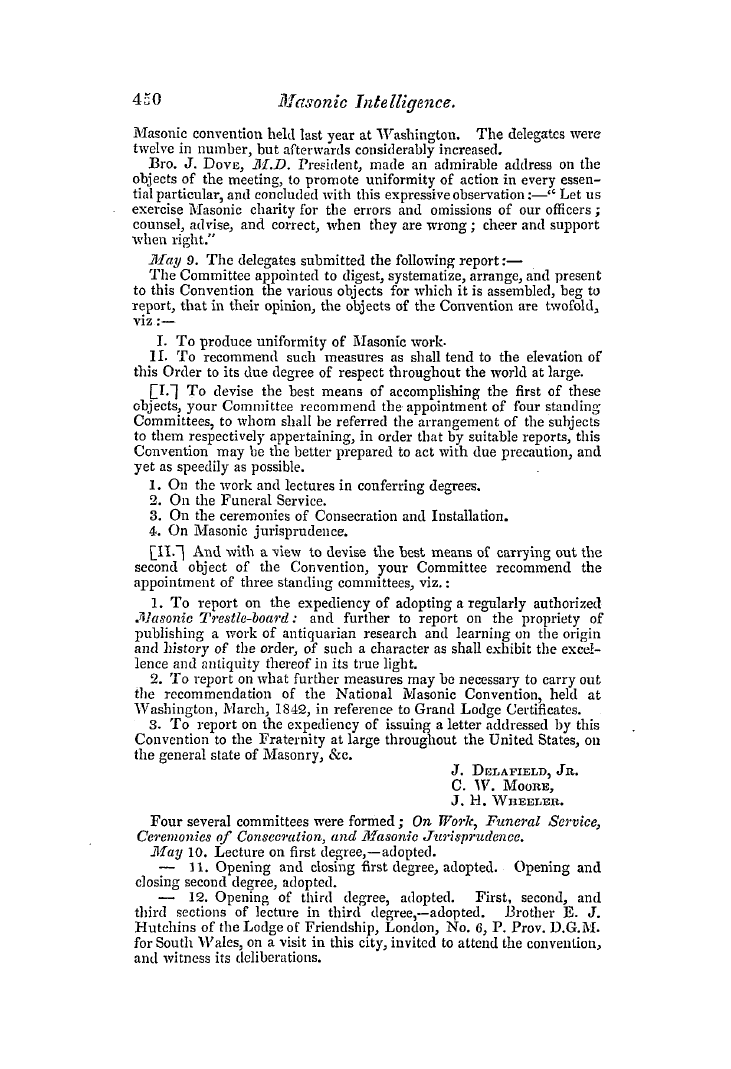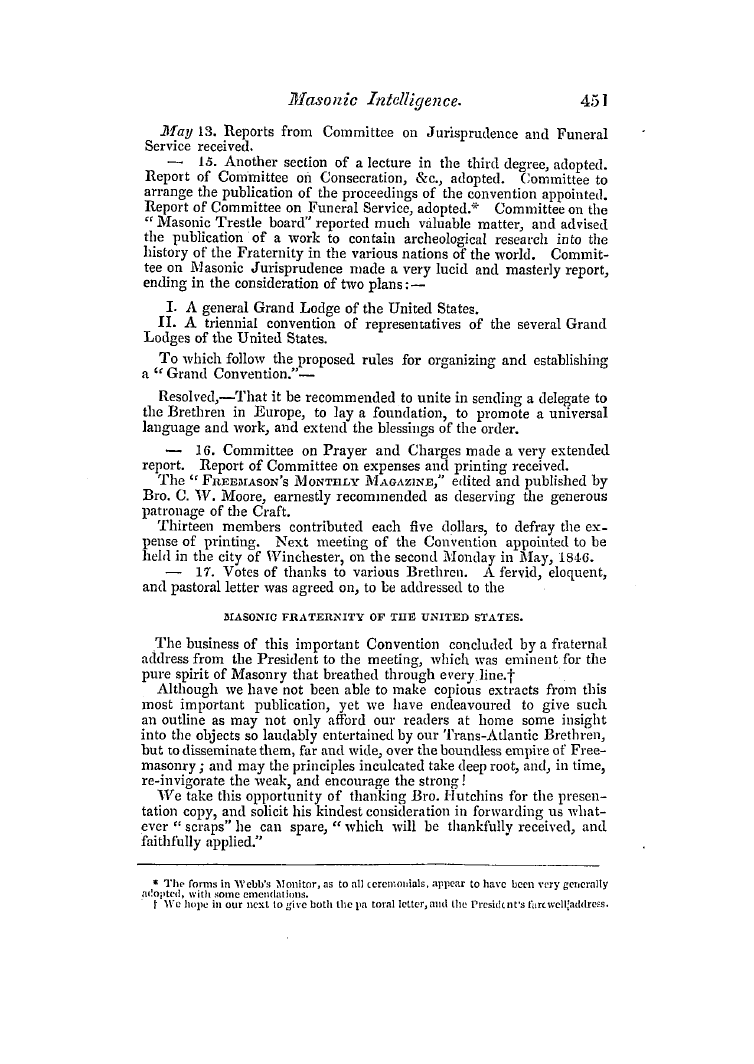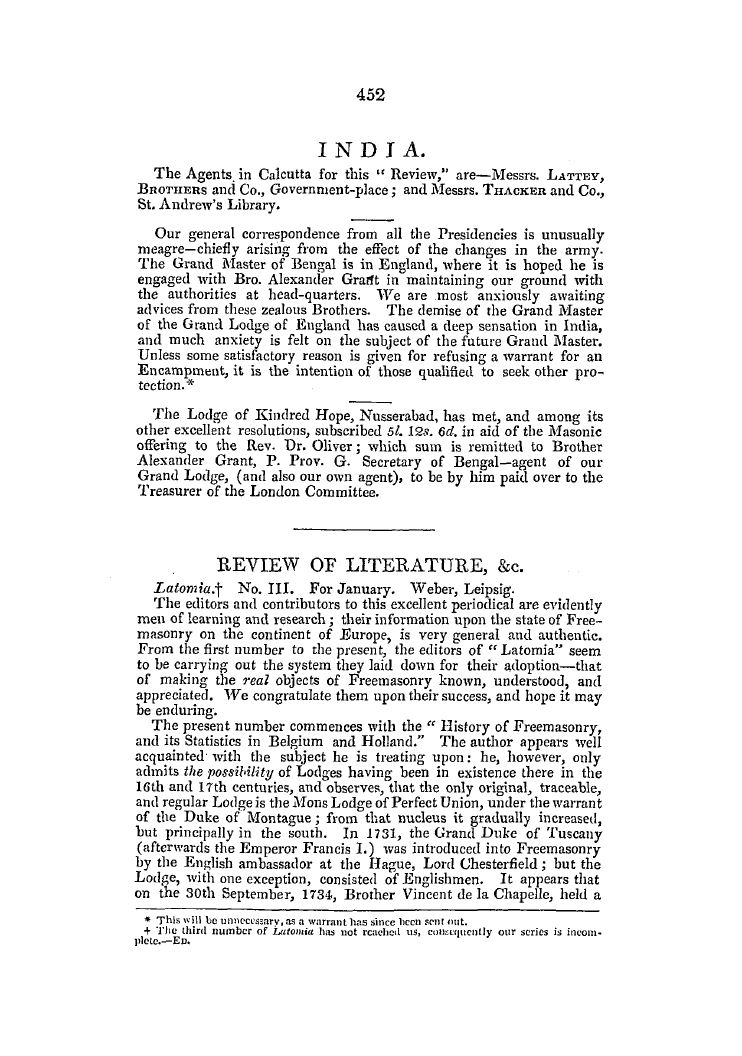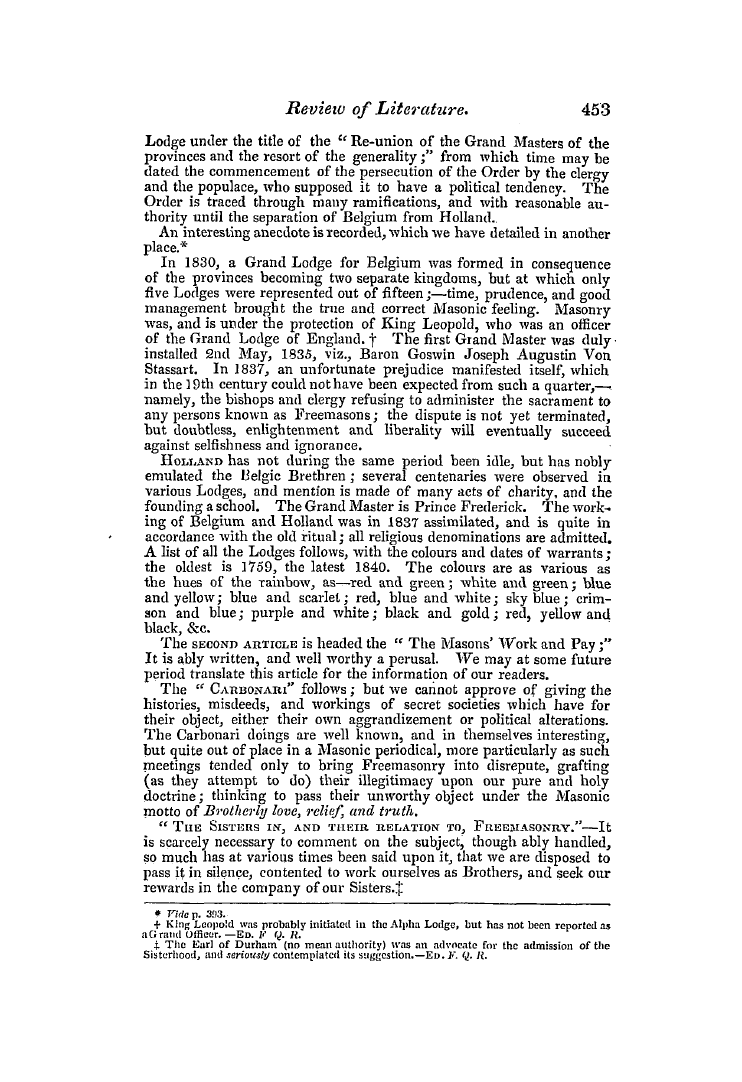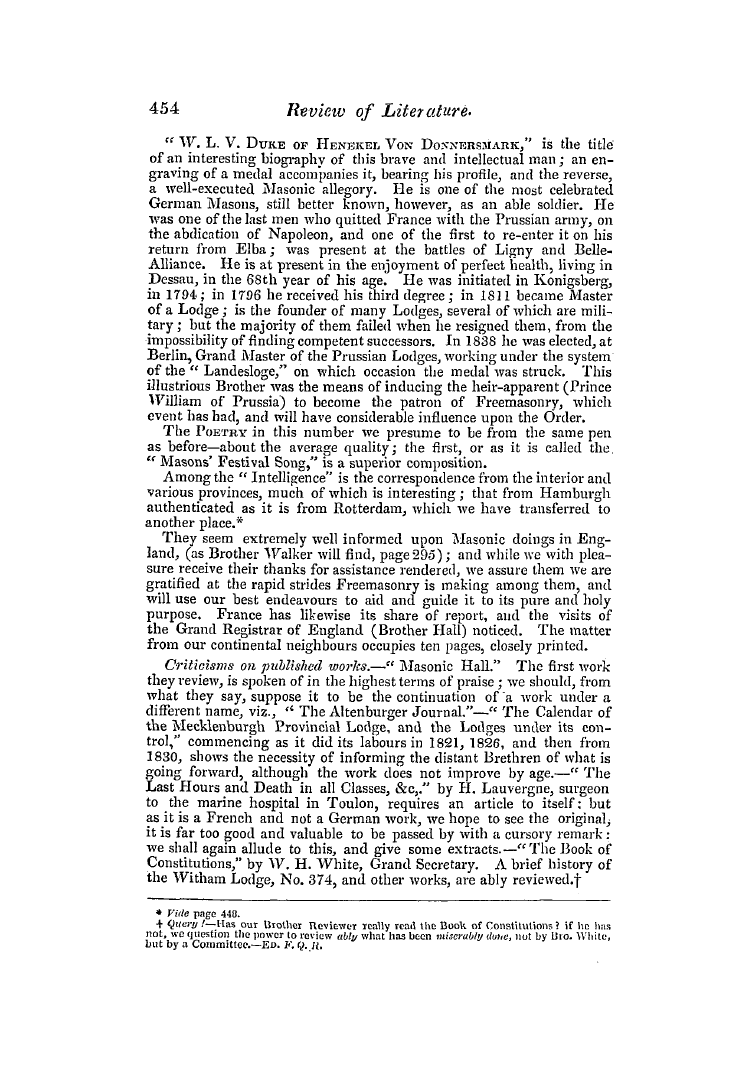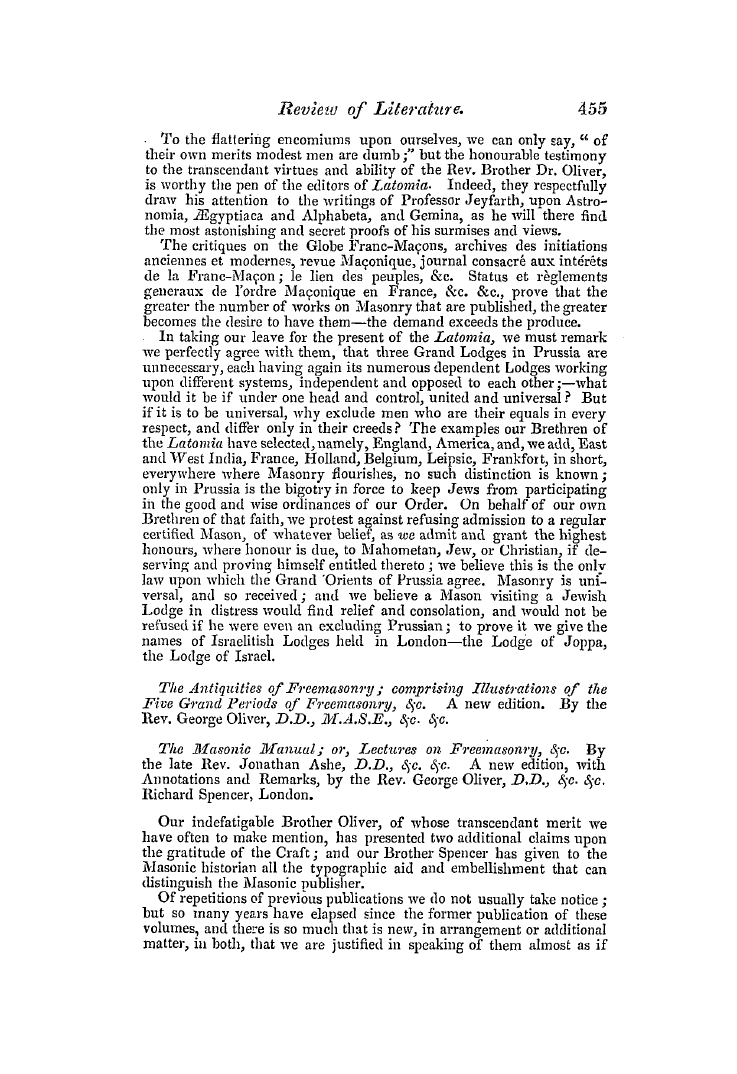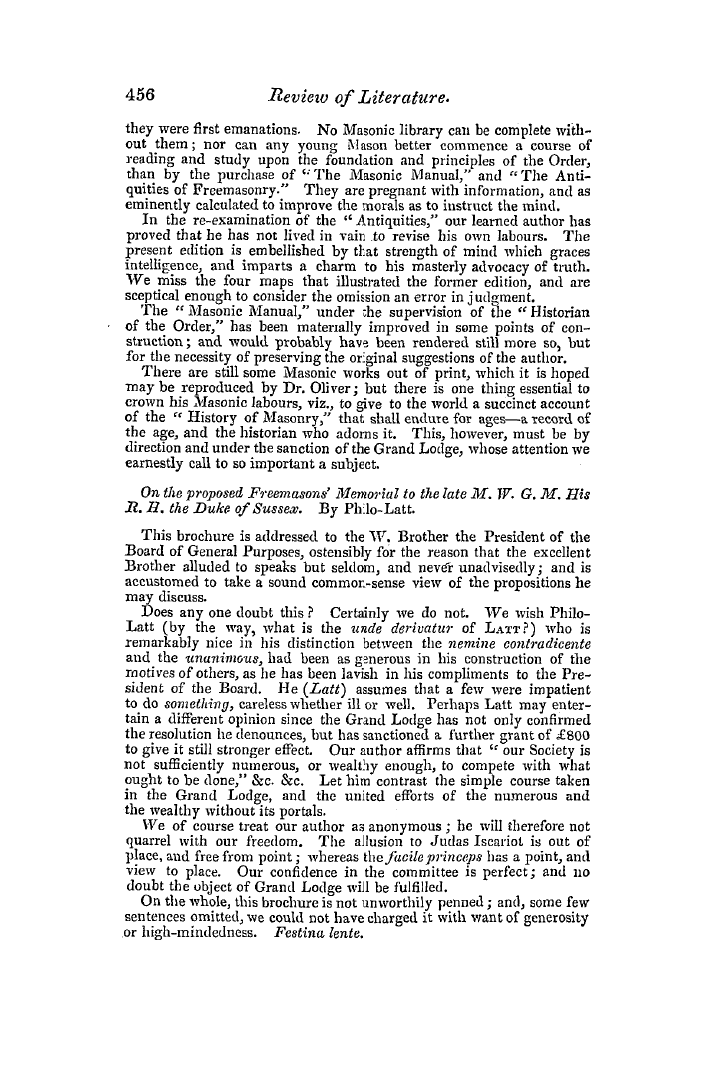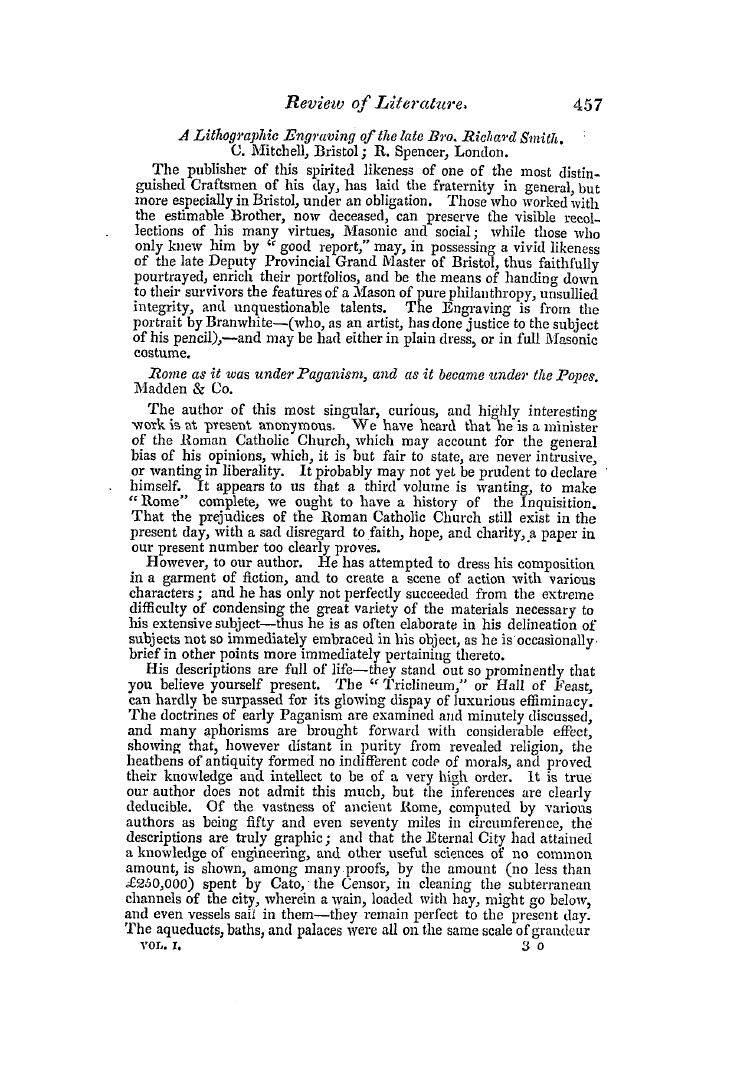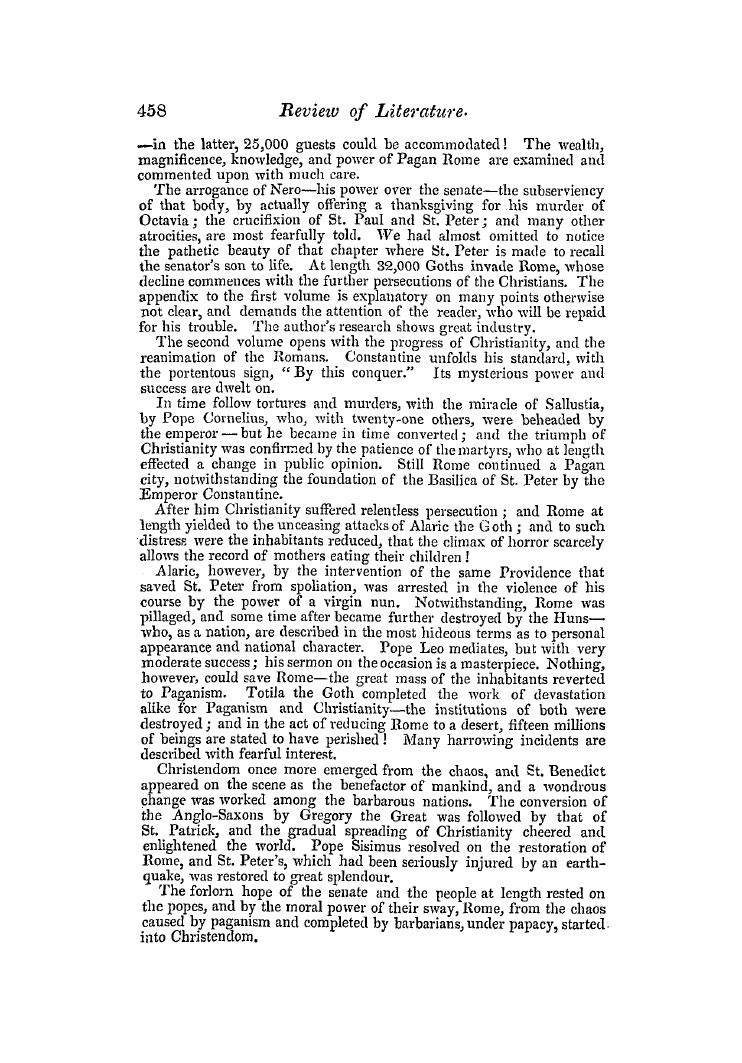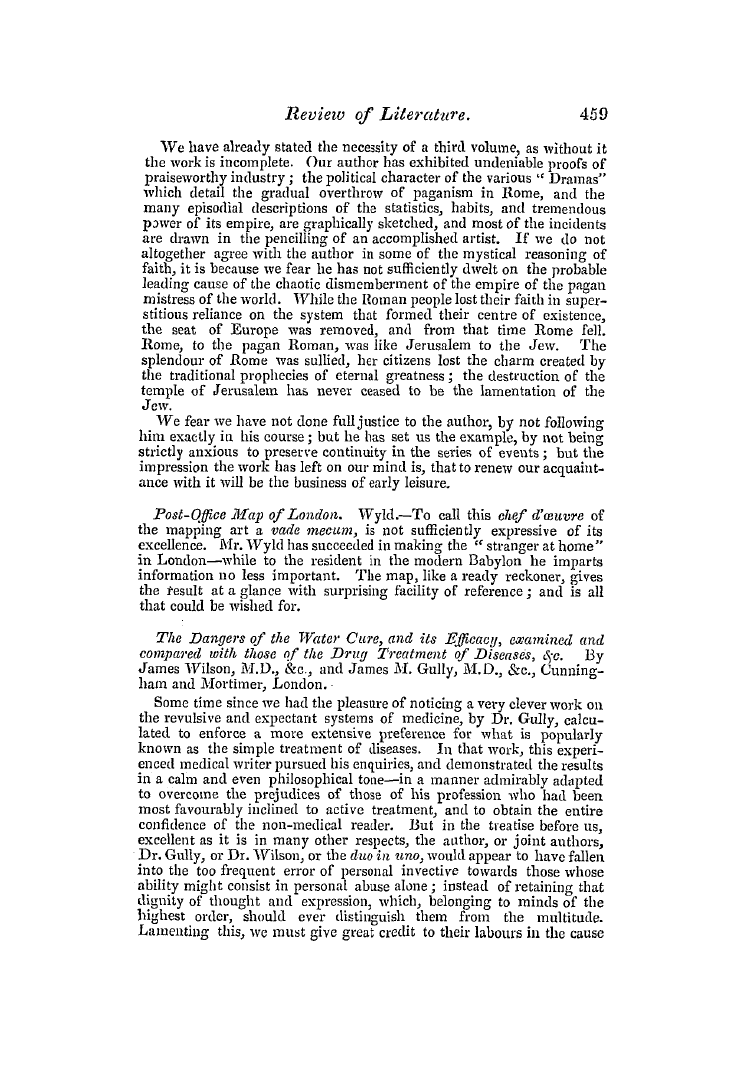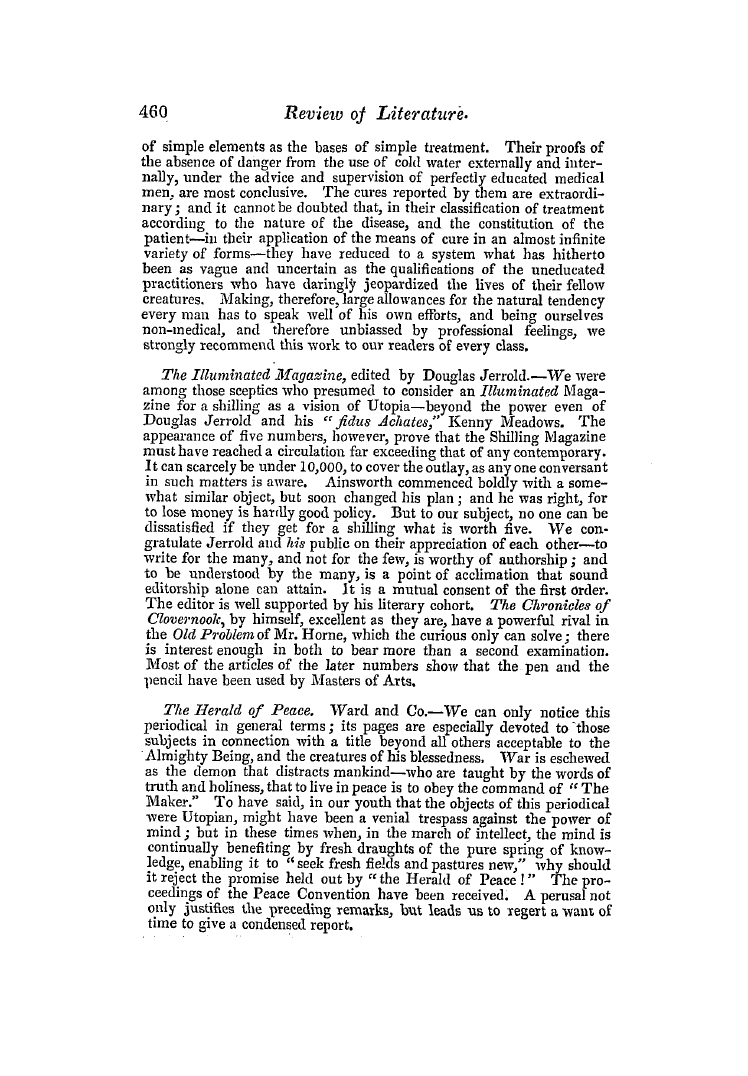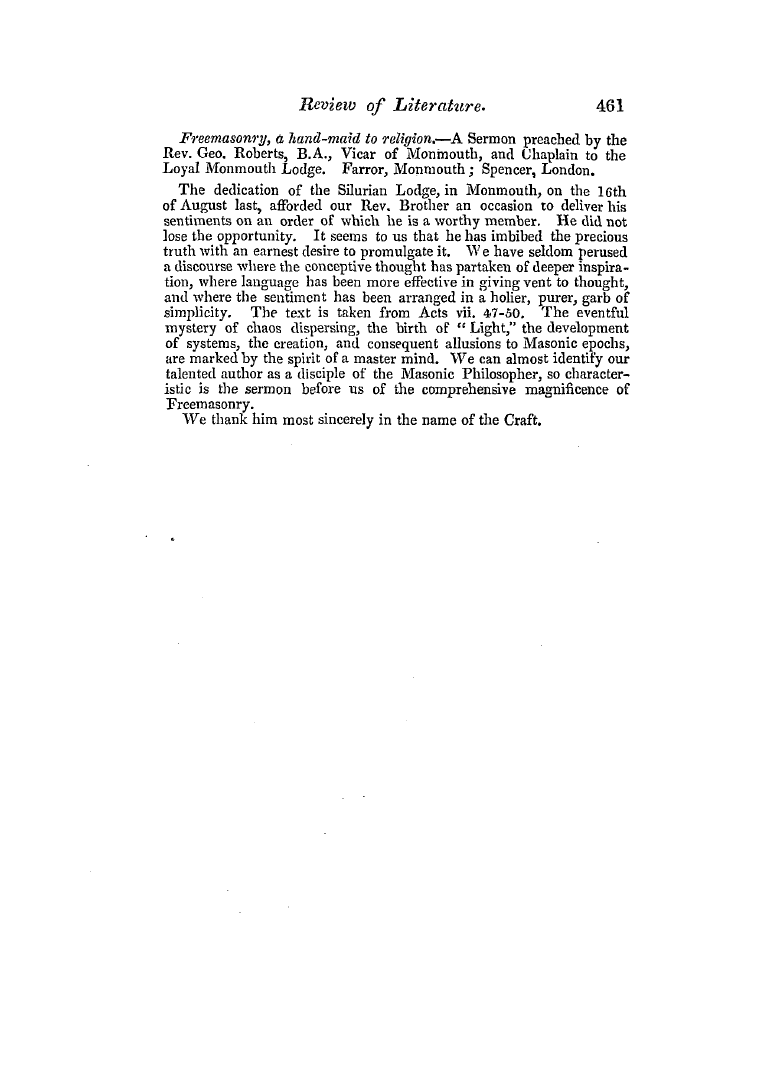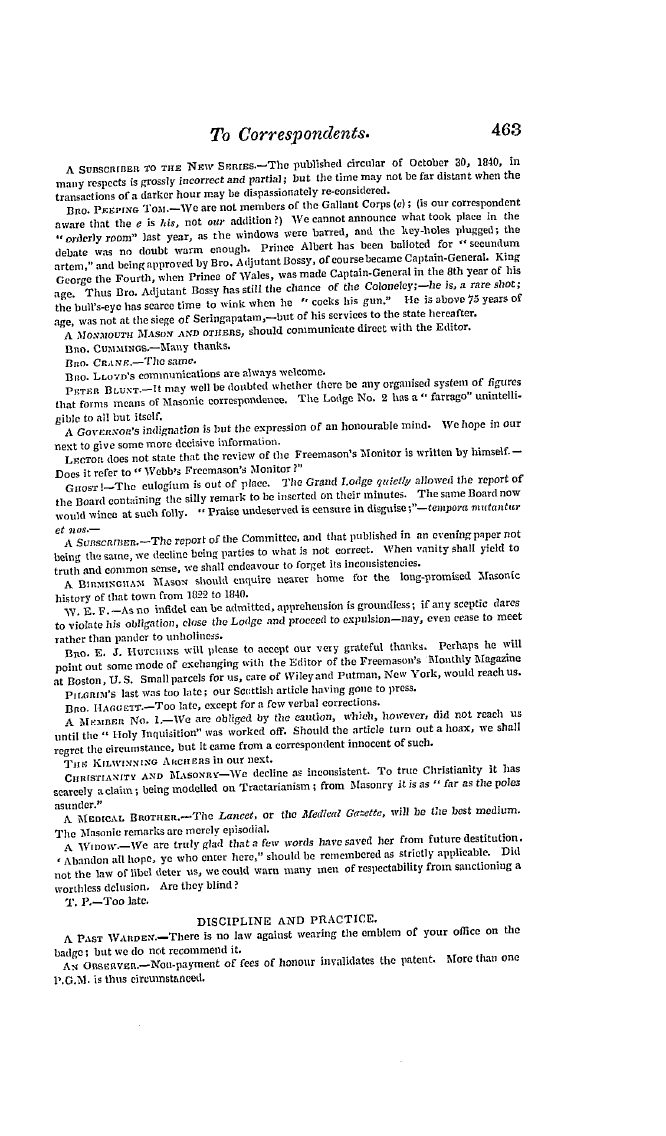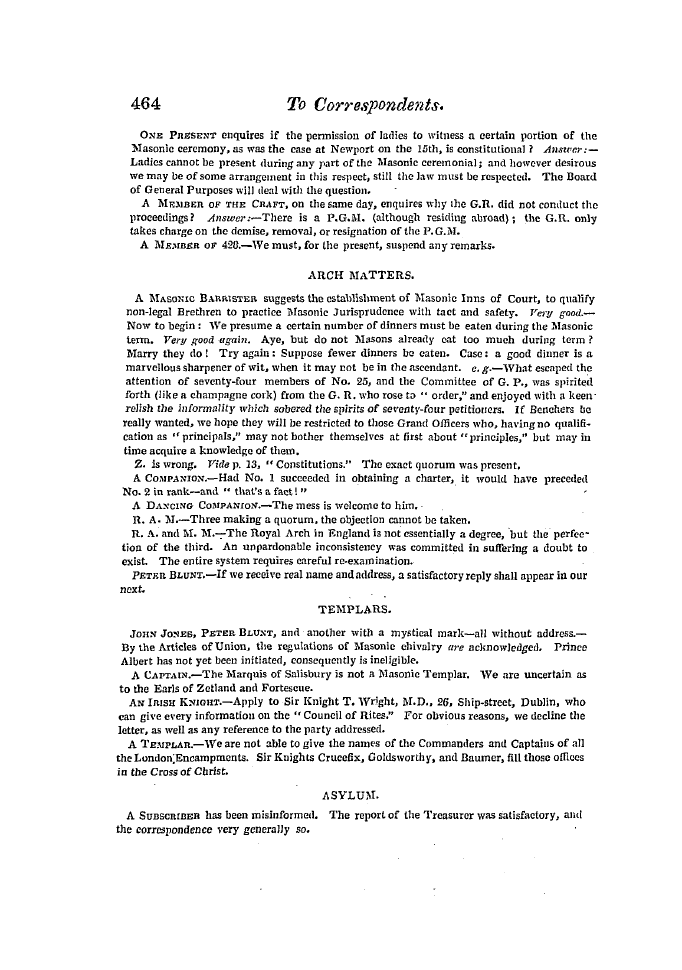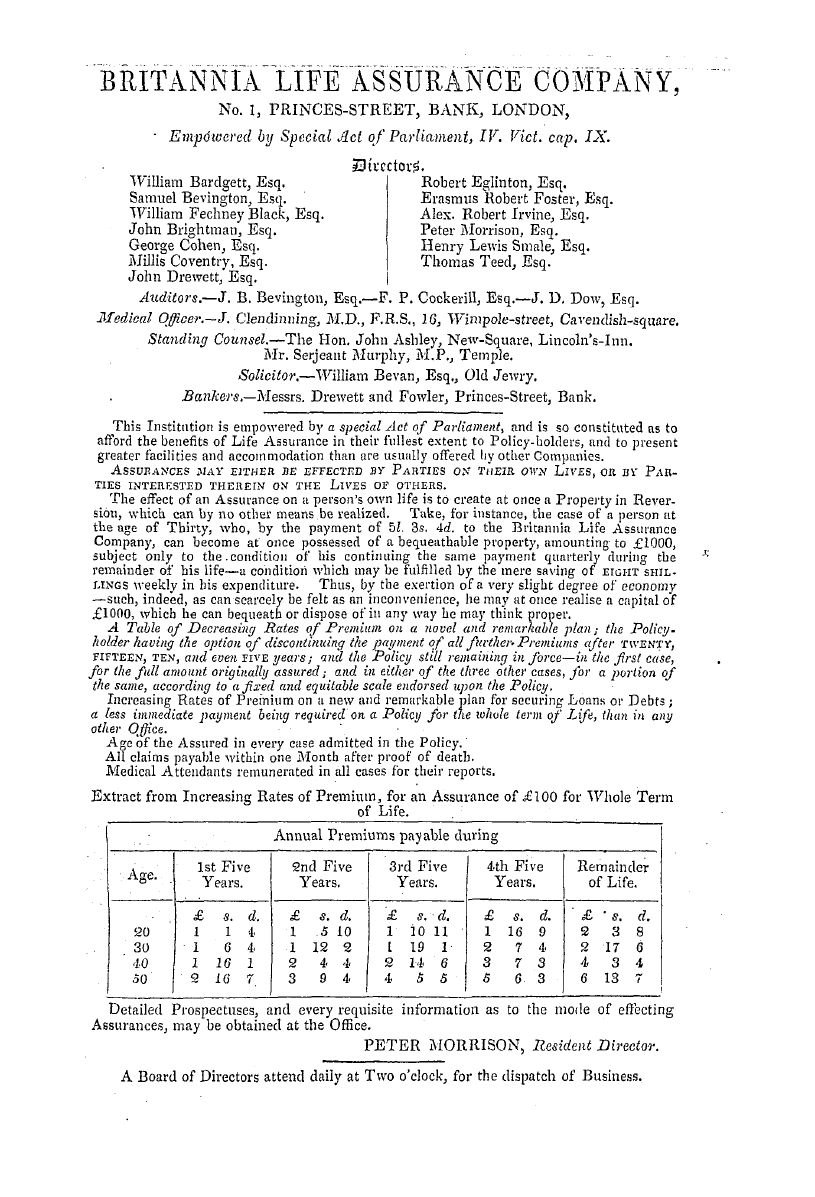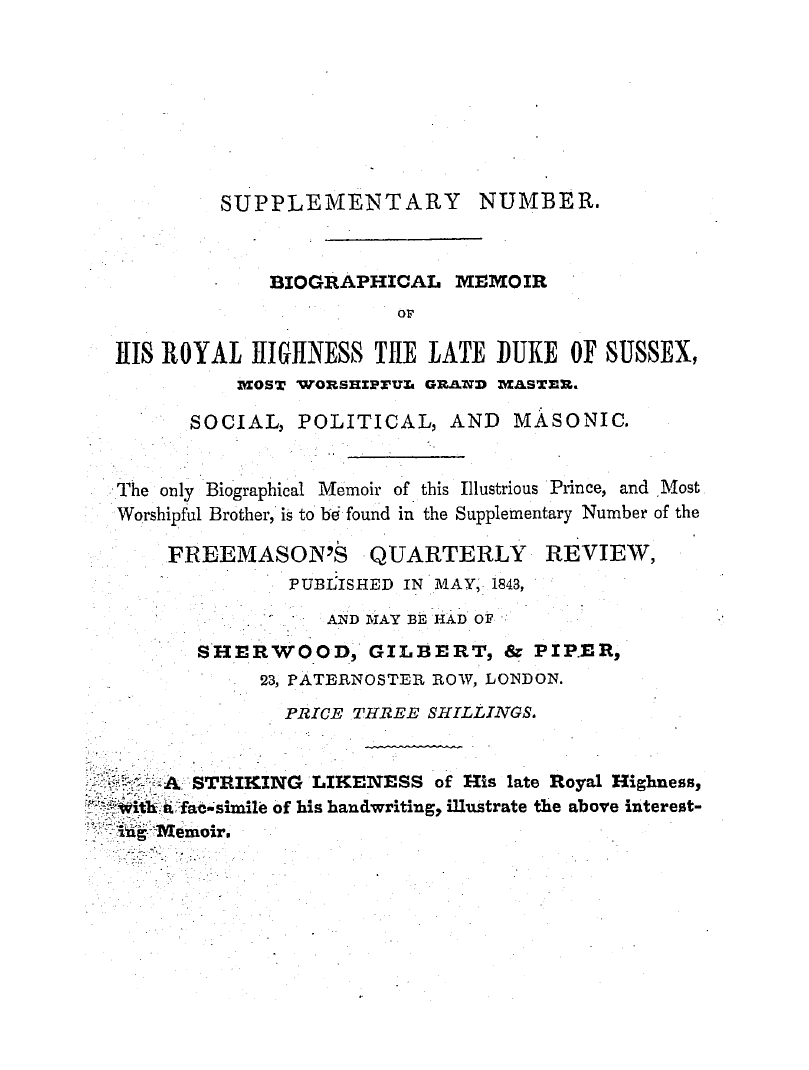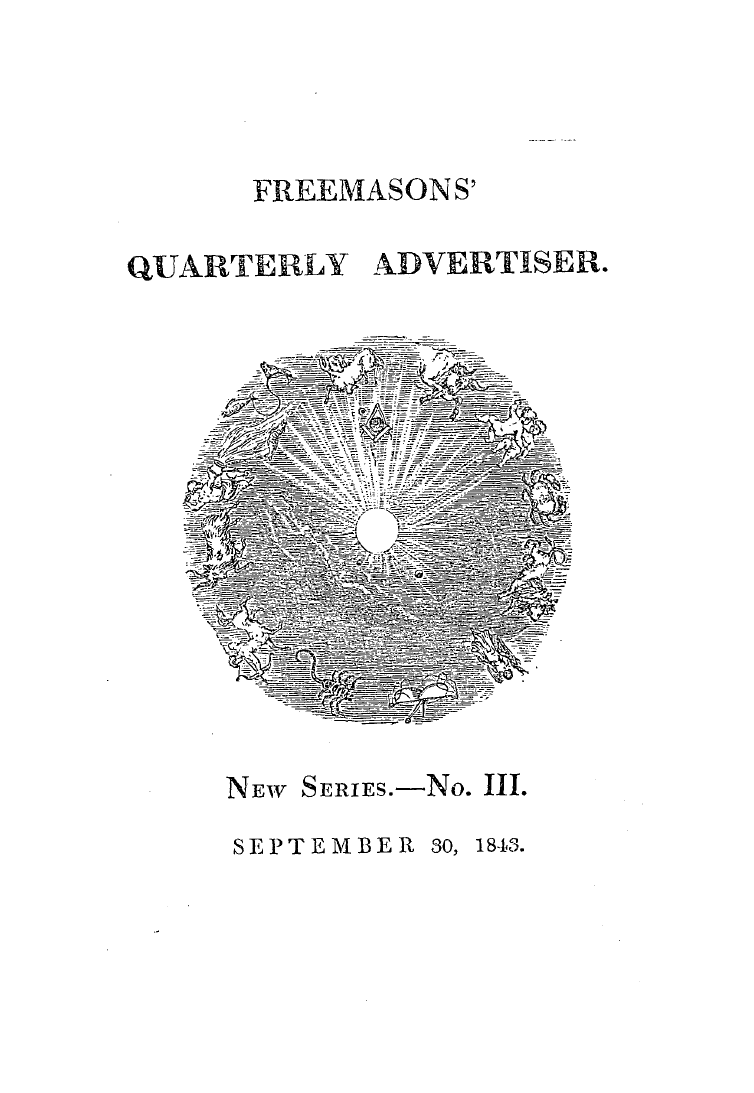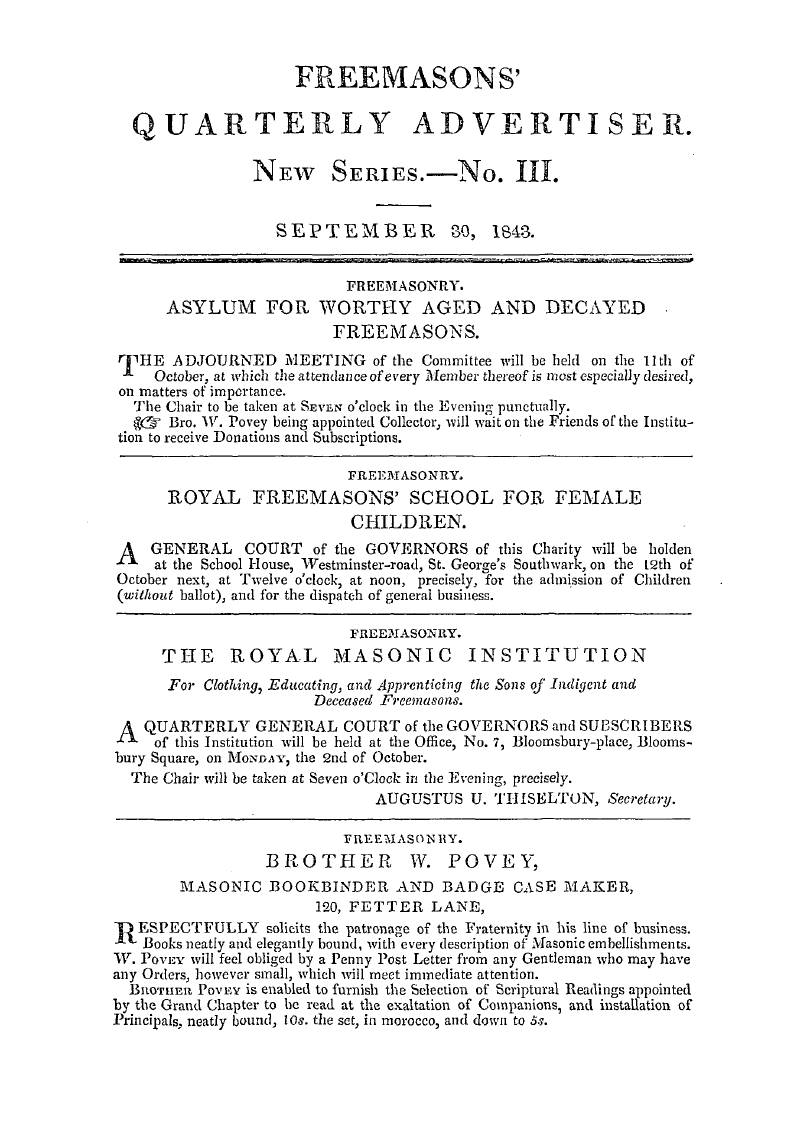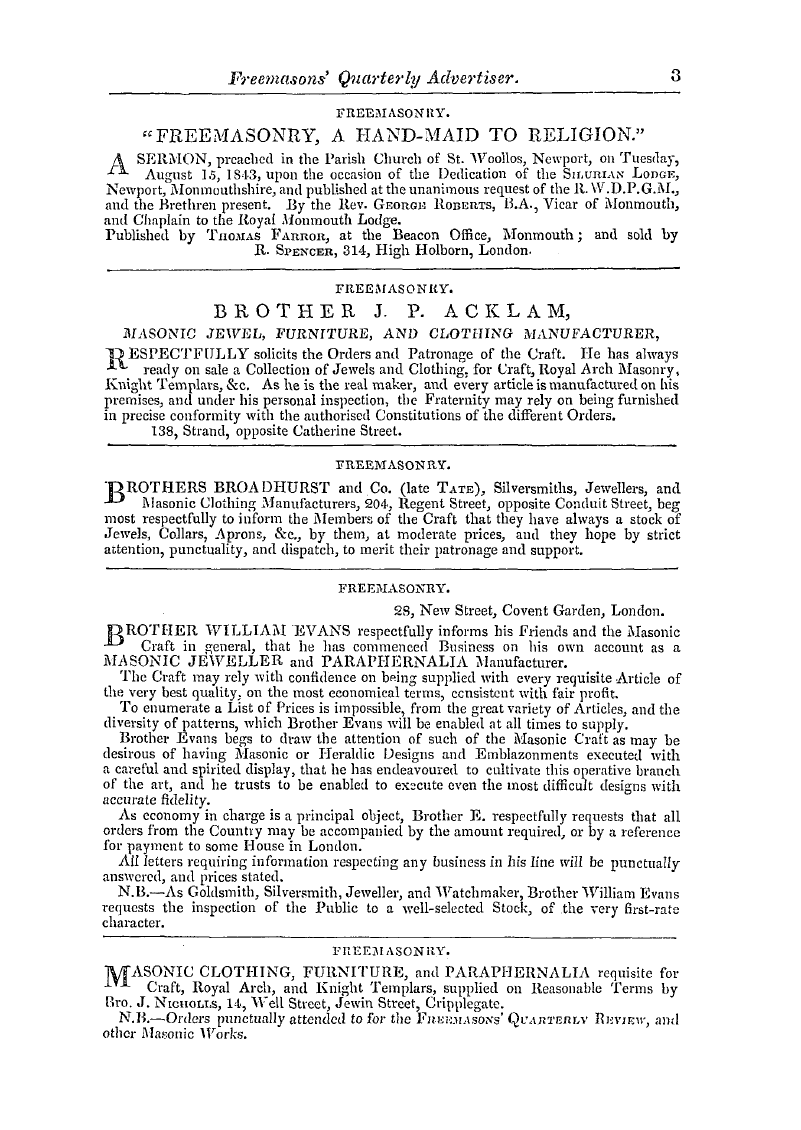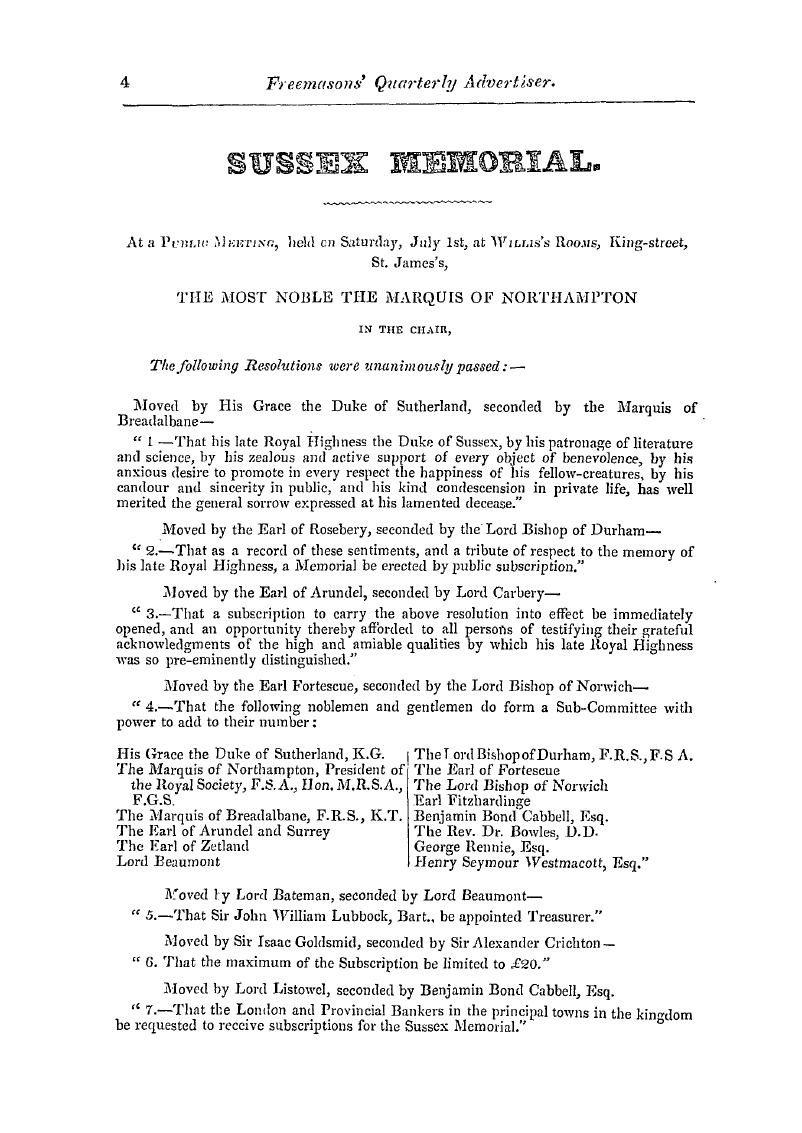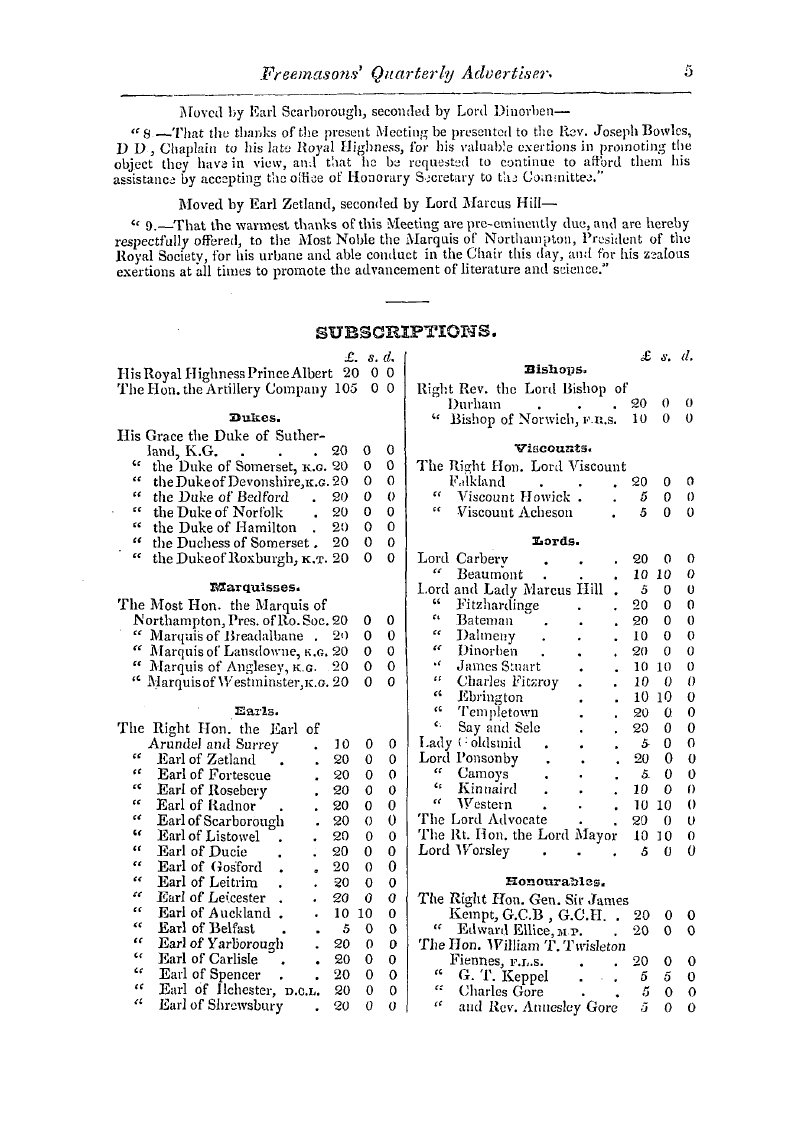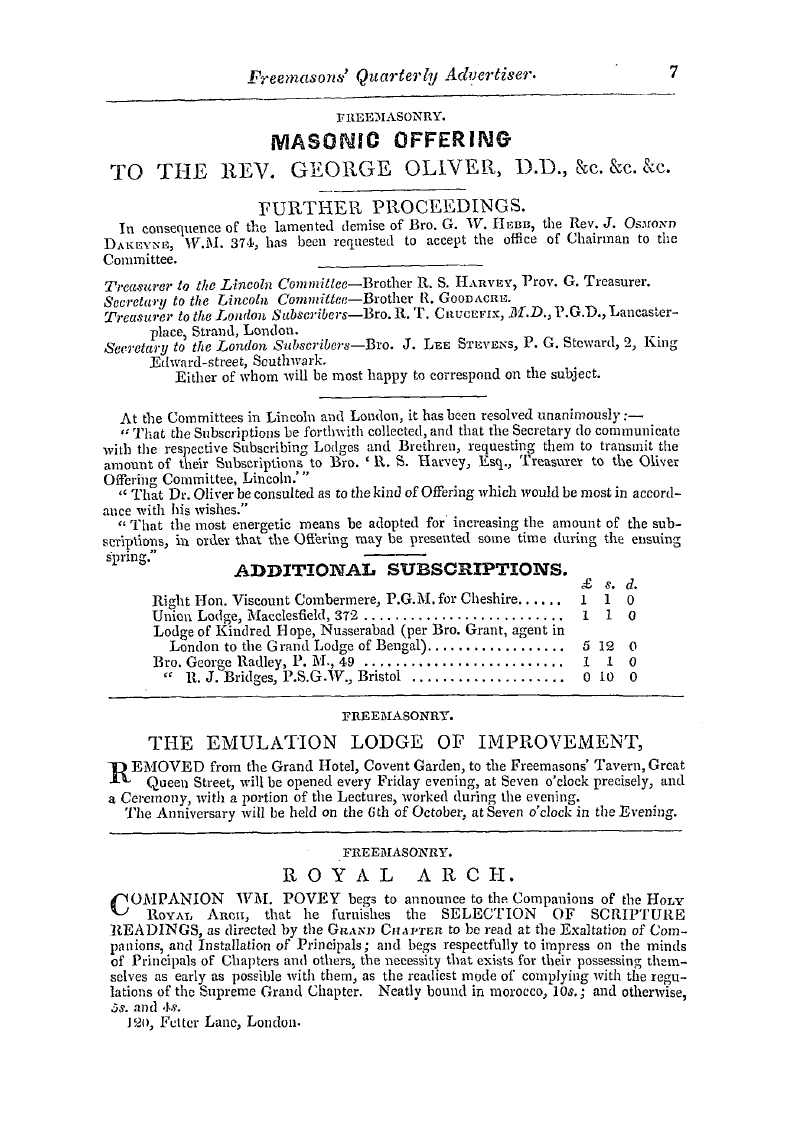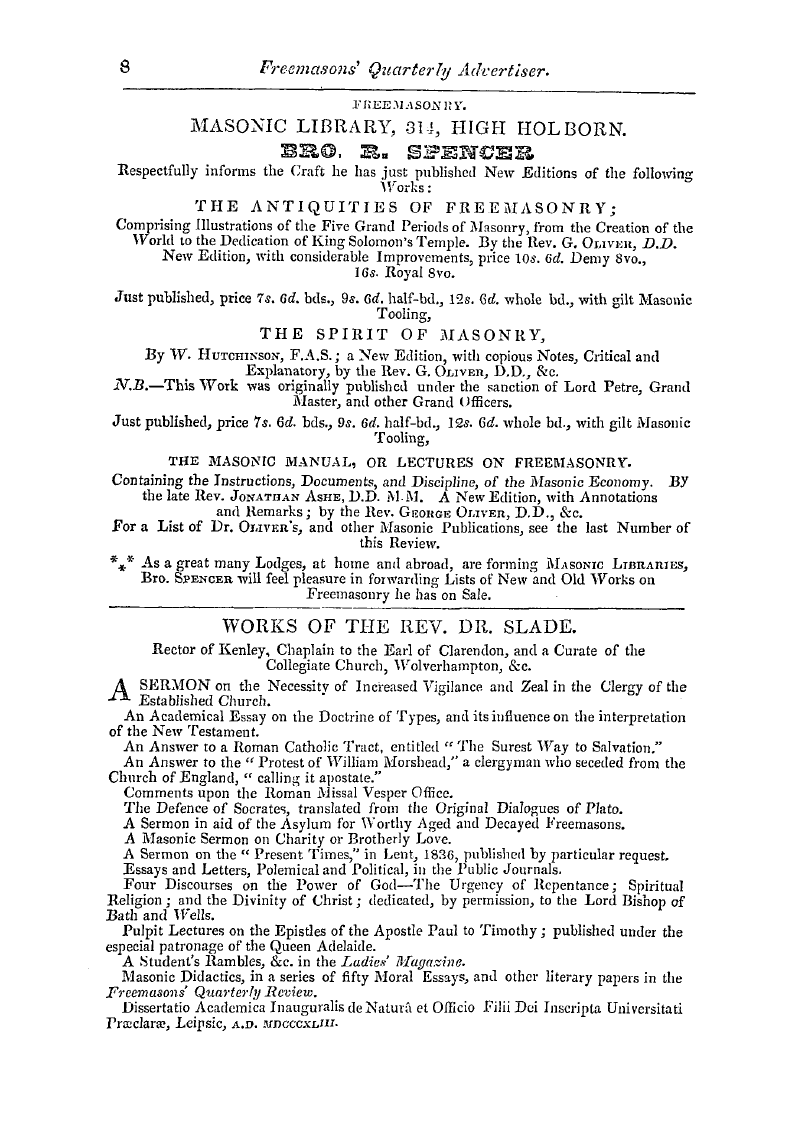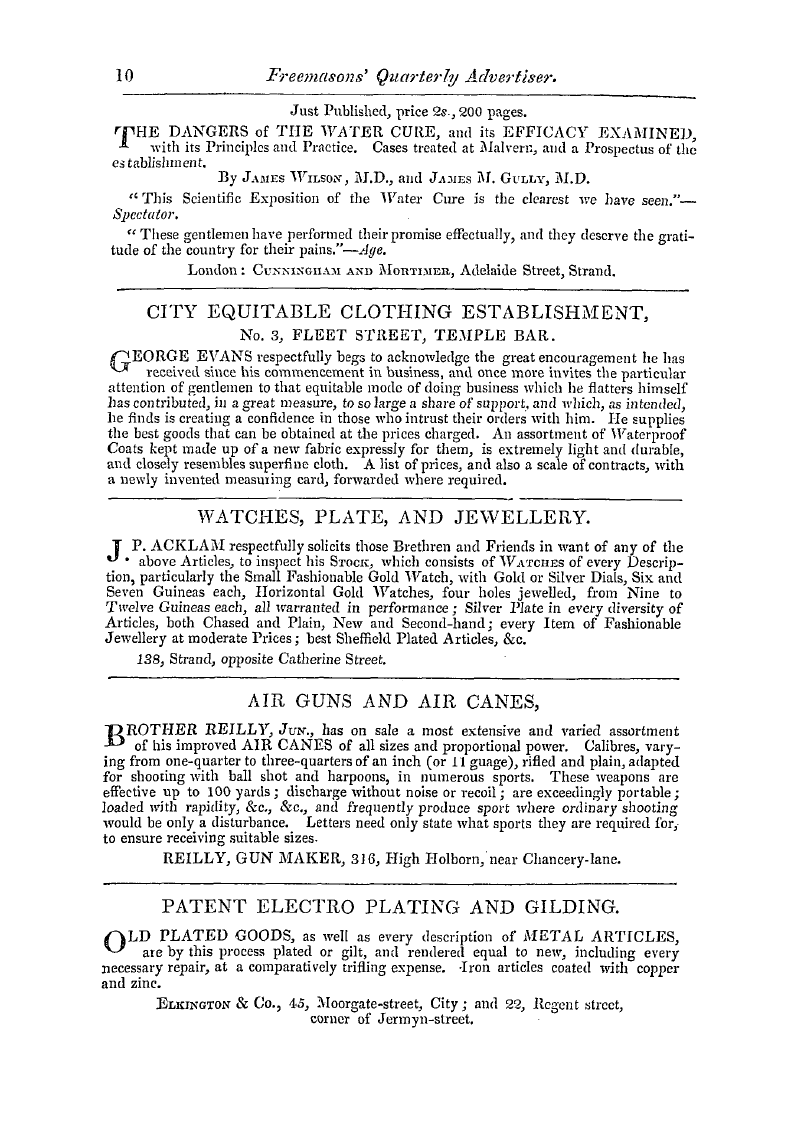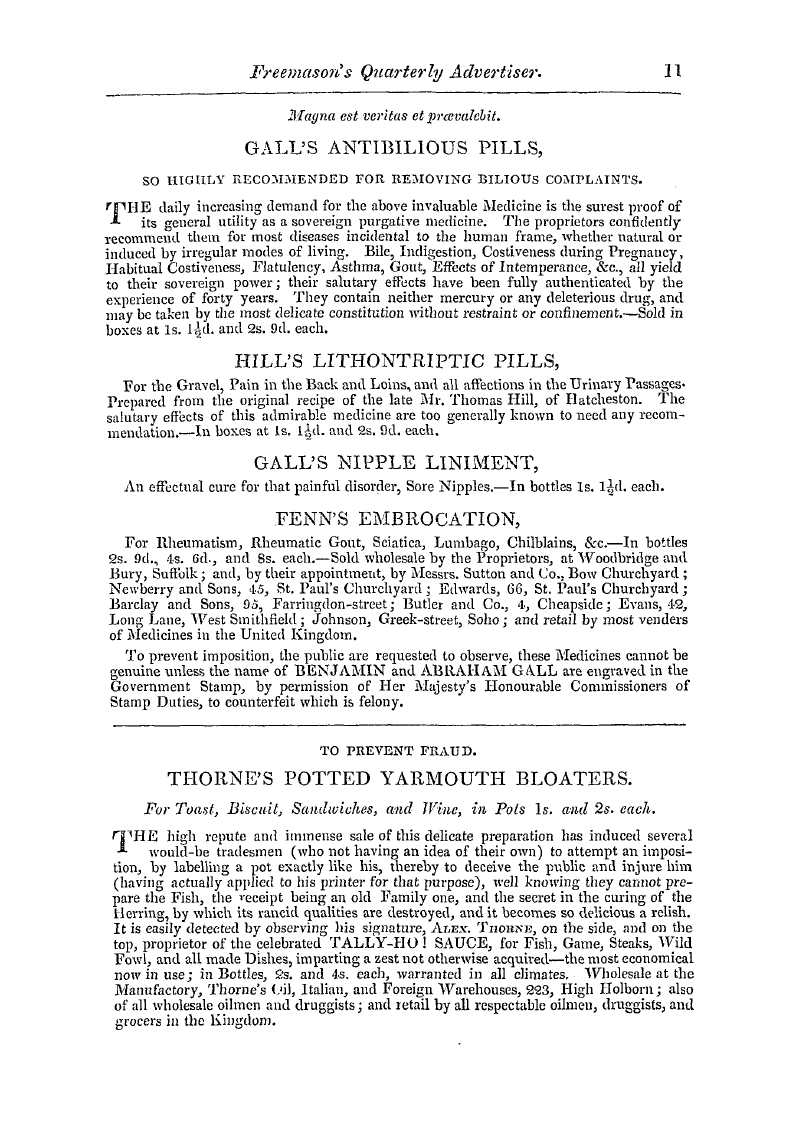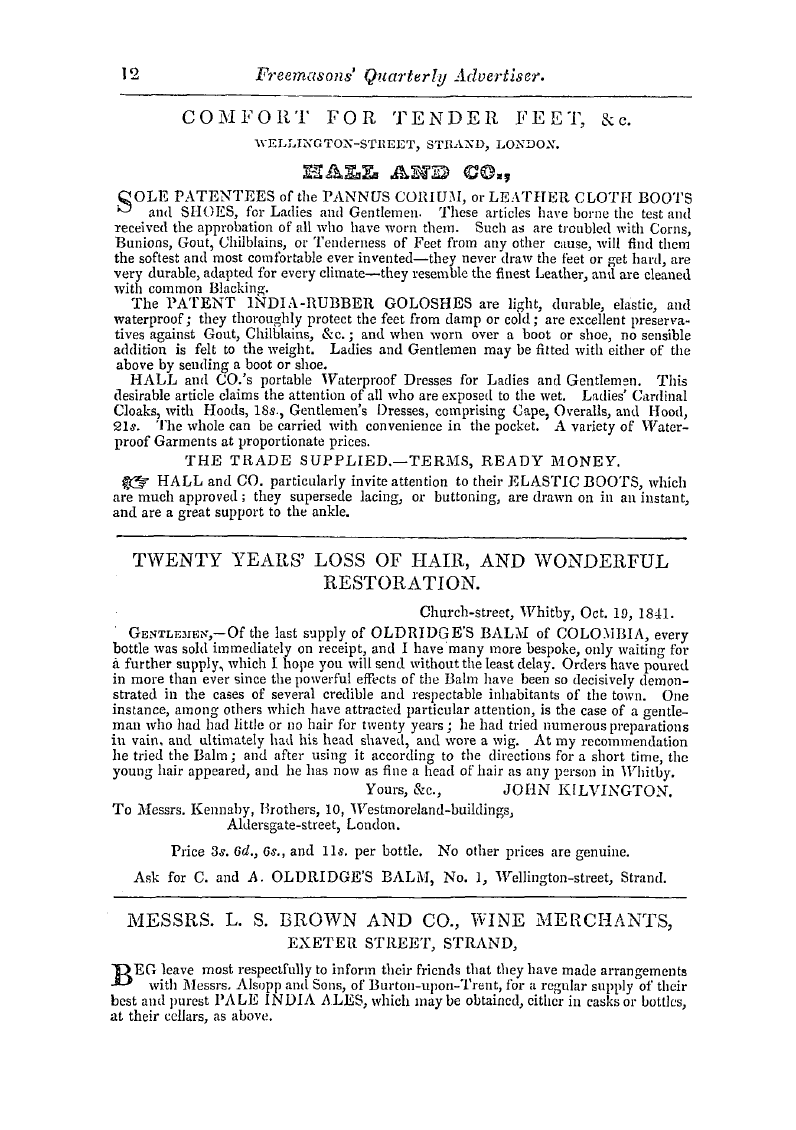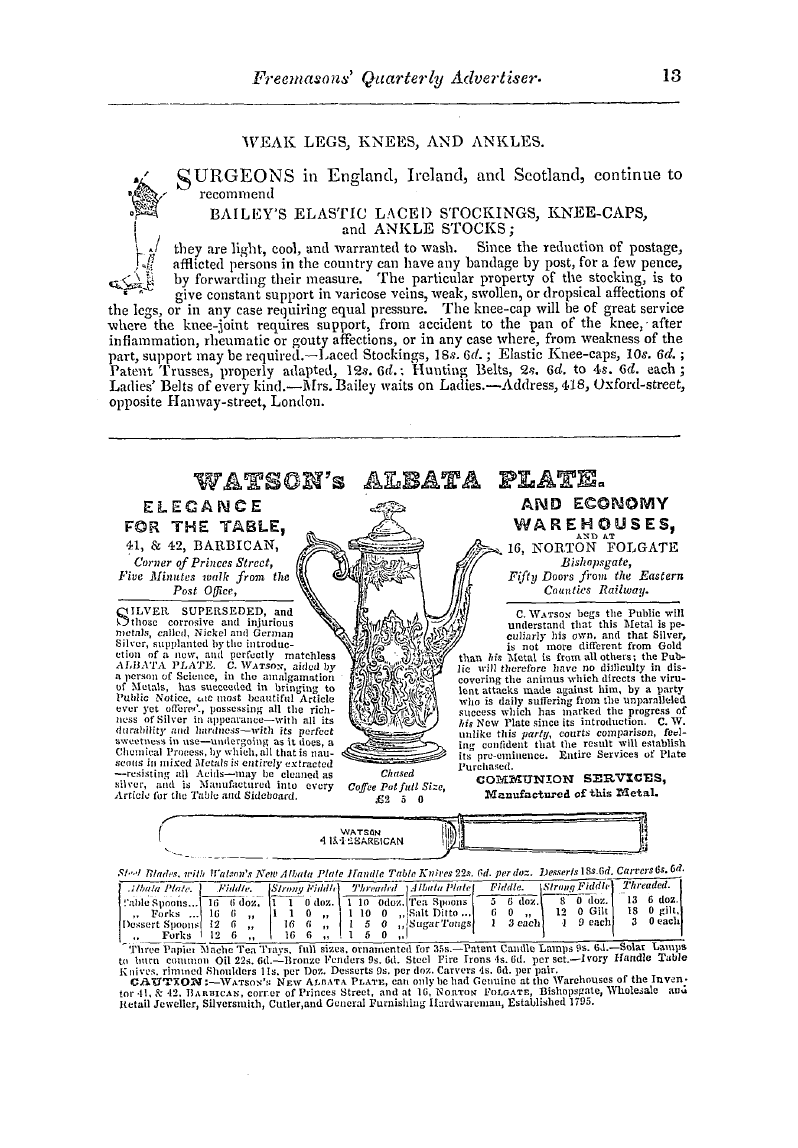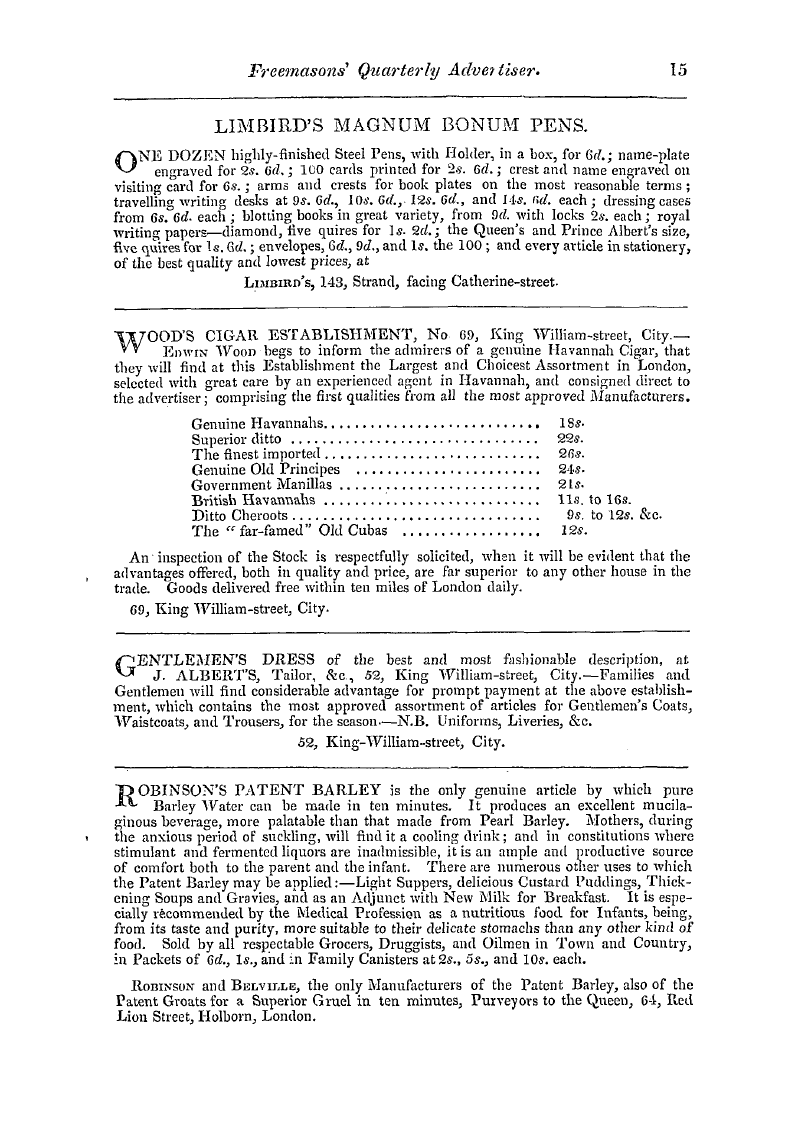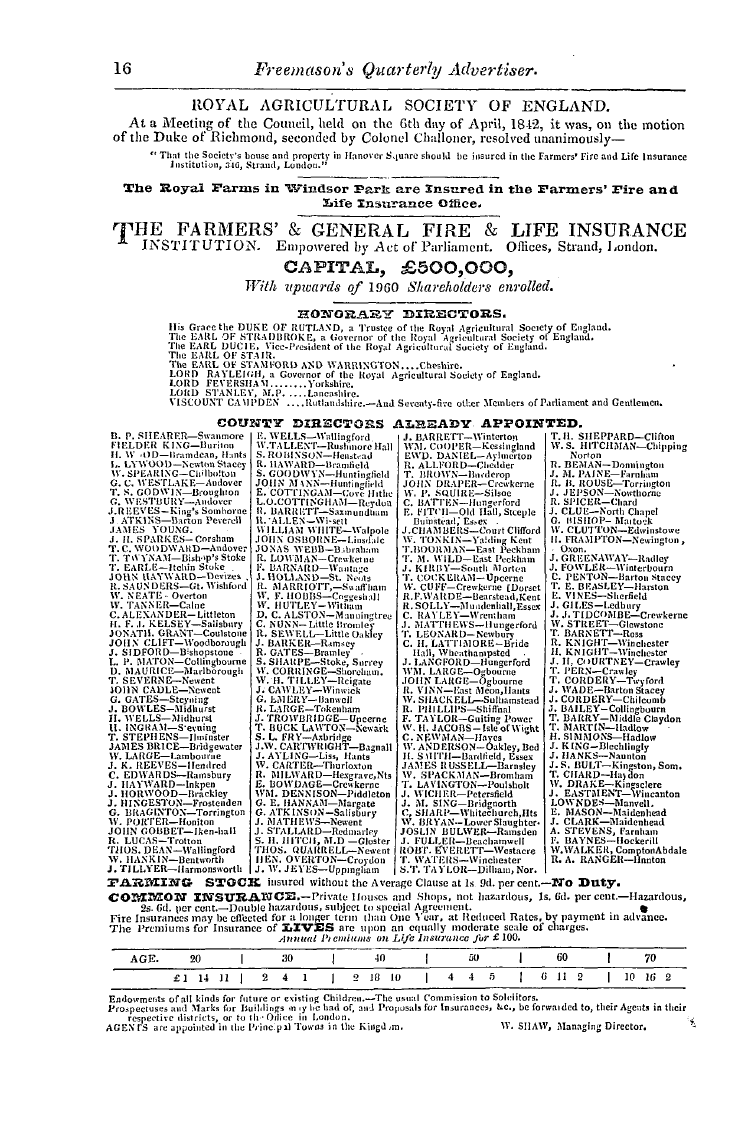-
Articles/Ads
Article REVIEW OF LITERATURE, &c. ← Page 7 of 10 →
Note: This text has been automatically extracted via Optical Character Recognition (OCR) software.
Review Of Literature, &C.
—in the latter , 25 , 000 guests could he accommodated ! The wealth , magnificence , knowledge , and power of Pagan Rome are examined and commented upon with much care . The arrogance of Nero—his power over the senate—the subserviency of that body , by actually offering a thanksgiving for his murder of Octavia ; the crucifixion of St . Paul and St . Peter ; and many other atrocities , are most fearfully told . We had almost omitted to notice
the pathetic beauty of that chapter where St . Peter is made to recall the senator ' s son to life . At length 32 , 000 Goths invade Rome , whose decline commences with the further persecutions of the Christians . The appendix to the first volume is explanatory on many points otherwise not clear , and demands the attention of the reader , who will be repaid for his trouble . The author ' s research shows great industry . The second volume opens with the progress of Christianity , and the reanimation of the Romans . Constantine unfolds his standard , with the portentous sign , "By this conquer . " Its mysterious power and success are dwelt on .
In time follow tortures and murders , with the miracle of Sallustia , by Pope Cornelius , who , with twenty-one others , were beheaded by the emperor — but he became in time converted ; and the triumph of Christianity was confirmed by the patience of the martyrs , who at length effected a change in public opinion . Still Rome continued a Pagan city , notwithstanding the foundation of the Basilica of St . Peter by the Emperor Constantine . After him Christianity suffered relentless persecution ; and Rome at
length yielded to the unceasing attacks of Alaric the Goth ; and to such distress were the inhabitants reduced , that the climax of horror scarcely allows the record of mothers eating their children ! Alaric , however , by the intervention of the same Providence that saved St . Peter from spoliation , was arrested in the violence of his course by the power of a virgin nun . Notwithstanding , Rome was pillaged , and some time after became further destroyed by the
Hunswho , as a nation , are described in the most hideous terms as to personal appearance and national character . Pope Leo mediates , but with very moderate success ; his sermon on the occasion is a masterpiece . Nothing , however , could save Rome—the great mass of the inhabitants reverted to Paganism . Totila the Goth completed the work of devastation alike for Paganism and Christianity—the institutions of both were destroyed ; and in the act of reducing Rome to a desert , fifteen millions of beings are stated to have perished ! Many harrowing incidents are described with fearful interest .
Christendom once more emerged from the chaos , and St . Benedict appeared on the scene as the benefactor of mankind , and a wondrous change was worked among the barbarous nations . The conversion of the Anglo-Saxons by Gregory the Great was followed by that of St . Patrick , and the gradual spreading of Christianity cheered and enlightened the world . Pope Sisimus resolved on the restoration of Romeand St . Peter ' swhich had been seriouslinjured ban
earth-, , y y quake , was restored to great splendour . The forlorn hope of the senate and the people at length rested on the popes , and by the moral power of their sway , Rome , from the chaos caused by paganism and completed by barbarians , under papacy , started into Christendom .
Note: This text has been automatically extracted via Optical Character Recognition (OCR) software.
Review Of Literature, &C.
—in the latter , 25 , 000 guests could he accommodated ! The wealth , magnificence , knowledge , and power of Pagan Rome are examined and commented upon with much care . The arrogance of Nero—his power over the senate—the subserviency of that body , by actually offering a thanksgiving for his murder of Octavia ; the crucifixion of St . Paul and St . Peter ; and many other atrocities , are most fearfully told . We had almost omitted to notice
the pathetic beauty of that chapter where St . Peter is made to recall the senator ' s son to life . At length 32 , 000 Goths invade Rome , whose decline commences with the further persecutions of the Christians . The appendix to the first volume is explanatory on many points otherwise not clear , and demands the attention of the reader , who will be repaid for his trouble . The author ' s research shows great industry . The second volume opens with the progress of Christianity , and the reanimation of the Romans . Constantine unfolds his standard , with the portentous sign , "By this conquer . " Its mysterious power and success are dwelt on .
In time follow tortures and murders , with the miracle of Sallustia , by Pope Cornelius , who , with twenty-one others , were beheaded by the emperor — but he became in time converted ; and the triumph of Christianity was confirmed by the patience of the martyrs , who at length effected a change in public opinion . Still Rome continued a Pagan city , notwithstanding the foundation of the Basilica of St . Peter by the Emperor Constantine . After him Christianity suffered relentless persecution ; and Rome at
length yielded to the unceasing attacks of Alaric the Goth ; and to such distress were the inhabitants reduced , that the climax of horror scarcely allows the record of mothers eating their children ! Alaric , however , by the intervention of the same Providence that saved St . Peter from spoliation , was arrested in the violence of his course by the power of a virgin nun . Notwithstanding , Rome was pillaged , and some time after became further destroyed by the
Hunswho , as a nation , are described in the most hideous terms as to personal appearance and national character . Pope Leo mediates , but with very moderate success ; his sermon on the occasion is a masterpiece . Nothing , however , could save Rome—the great mass of the inhabitants reverted to Paganism . Totila the Goth completed the work of devastation alike for Paganism and Christianity—the institutions of both were destroyed ; and in the act of reducing Rome to a desert , fifteen millions of beings are stated to have perished ! Many harrowing incidents are described with fearful interest .
Christendom once more emerged from the chaos , and St . Benedict appeared on the scene as the benefactor of mankind , and a wondrous change was worked among the barbarous nations . The conversion of the Anglo-Saxons by Gregory the Great was followed by that of St . Patrick , and the gradual spreading of Christianity cheered and enlightened the world . Pope Sisimus resolved on the restoration of Romeand St . Peter ' swhich had been seriouslinjured ban
earth-, , y y quake , was restored to great splendour . The forlorn hope of the senate and the people at length rested on the popes , and by the moral power of their sway , Rome , from the chaos caused by paganism and completed by barbarians , under papacy , started into Christendom .































































